Placeholder content for creative
- Graphic Designer Resume Examples
- UX Designer Resume Examples
- UI Designer Resume Examples
- Art Director Resume Examples
- Illustrator Resume Examples
- Copywriter Resume Examples
- Content Creator Resume Examples
- Photographer Resume Examples
- Video Editor Resume Examples
- Motion Designer Resume Examples
- Brand Strategist Resume Example
- Visual Designer Resume Examples
- Fashion Designer Resume Examples
- Art Teacher Resume Examples
- Set Designer Resume Examples
- Industrial Designer Resume Examples
- Web Designer Resume Examples
- Interior Designer Resume
- Tattoo Artist Resume
- Sound Designer Resume
- Game Designer Resume
- Storyboard Artist Resume
- Musician Resume
Your Guide to Creative Resumes That Get Noticed
Unlock the potential of your creative career with a standout resume. This page will provide you with tailored examples and essential tips to help you shine in the competitive creative industry.
Introduction to the Job Sector
In the ever-evolving landscape of the creative industry, your resume is often your first opportunity to make a lasting impression. Unlike other fields where conventional formats may suffice, the creative sector demands a unique blend of personality, flair, and professionalism in resumes. Hiring managers in this domain are not just looking for qualifications; they seek individuals who can convey their creativity through their application materials. A well-crafted resume showcases your unique style, communicates your value, and aligns with the vision of the companies you aspire to join.
Hiring managers typically prioritize candidates who demonstrate both technical skills and creative thinking. They search for evidence of your past work, innovative projects, and the ability to collaborate effectively within a team. In this page, you’ll find a variety of resume examples specifically tailored for various roles within the creative field, tips for showcasing your skills effectively, and insights that will help you navigate the hiring landscape.
Employment Trends and Statistics
- The creative industry is projected to grow by 10% from 2022 to 2032, significantly outpacing the average for all occupations.
- Graphic designers, one of the most sought-after roles, have an average salary of $52,000 per year, with top earners making over $90,000.
- The demand for digital marketing specialists, including content creators and social media managers, is expected to increase by 13% over the next decade.
- Freelance opportunities in the creative sector are on the rise, with over 35% of creative professionals working as freelancers in 2023.
- Companies that prioritize creative talent are 3.5 times more likely to outperform their competitors in terms of revenue growth.
Resume Tips for Creative Professionals
To create an impactful resume that stands out in the creative industry, consider the following essential elements:
- Visual Appeal: Utilize creative formatting and design elements that reflect your personal style while maintaining professionalism. Use color, typography, and layout to make your resume visually engaging.
- Portfolio Links: Always include links to your online portfolio or relevant work samples. This allows hiring managers to see your creativity in action and assess your fit for the role.
- Tailored Content: Customize your resume for each application, emphasizing skills and experiences that align with the specific job description. Highlight relevant projects and achievements that showcase your unique talents.
- Keywords: Incorporate industry-specific keywords related to skills, tools, and technologies to ensure your resume passes through applicant tracking systems (ATS).
- Soft Skills: Don’t forget to include soft skills, such as creativity, collaboration, and communication, which are highly valued in the creative sector.
- Professional Development: List any relevant certifications, workshops, or courses that enhance your skills and demonstrate your commitment to continuous learning.
By implementing these strategies, you’ll craft a resume that not only highlights your creative strengths but also resonates with hiring managers in this vibrant field.
Graphic Designer Resume Examples
Graphic Designer Resume Examples: Crafting Your Visual Identity
Unlock your potential with tailored resume examples specifically designed for aspiring and experienced graphic designers.
Understanding the Graphic Design Job Sector
In the competitive world of graphic design, your resume serves as a pivotal tool in capturing the attention of hiring managers. Unlike traditional job sectors, a graphic designer’s resume is not just about listing skills and experiences; it’s a creative portfolio piece that reflects your artistic vision and professionalism. Hiring managers actively seek resumes that showcase both technical proficiency and a unique design aesthetic, making it crucial for candidates to present their skills in a visually appealing manner.
When assessing candidates, hiring managers prioritize relevant experience, creativity, and a strong understanding of design principles. They look for portfolios that demonstrate diverse projects, proficiency in various design software, and the ability to convey messages effectively through visuals. In this guide, you’ll find a variety of resume examples, offering insights into design styles and formats that resonate with industry standards and employer expectations.
Employment Trends and Statistics
- Job Growth: The Bureau of Labor Statistics projects a 3% growth rate for graphic design jobs from 2021 to 2031, indicating steady demand in the field.
- High-Demand Roles: Positions such as UX/UI designers and multimedia artists are increasingly sought after, reflecting the industry’s shift towards digital design solutions.
- Average Salary: As of 2023, the median annual salary for graphic designers is approximately $53,380, with top earners in specialized roles making significantly more.
- Industry Diversity: Graphic designers find opportunities across various sectors, including advertising, publishing, and technology, allowing for versatile career paths.
- Freelance Opportunities: Over 30% of graphic designers work as freelancers, highlighting the rise of gig economy roles within the industry.
Resume Tips for Graphic Design Professionals
To create a standout resume in the graphic design field, consider the following essential elements:
- Showcase Your Portfolio: Include a link to your online portfolio prominently on your resume. This is your chance to visually demonstrate your skills and style.
- Highlight Relevant Software Proficiency: Make sure to list the design software you’re skilled in, such as Adobe Creative Suite, Sketch, or Figma, as hiring managers often look for these technical skills.
- Tailor Your Design: Use a clean, professional design layout that reflects your personal brand and aligns with the type of position you’re applying for.
- Include Key Certifications: If you have certifications related to design or specific software, make sure to highlight them to enhance your credibility.
- Quantify Achievements: Whenever possible, use metrics to showcase your accomplishments (e.g., “Increased client engagement by 25% through redesigning branding materials”).
- Focus on Soft Skills: In addition to technical skills, highlight soft skills such as communication, teamwork, and problem-solving, which are crucial in collaborative design environments.
By following these strategies and utilizing the examples provided, you’ll be well on your way to crafting a compelling resume that stands out in the graphic design job market.
See More Graphic Designer Resume Examples →
Ready to create an outstanding resume? Use our resume builder to create an outstanding resume in 15 min.
UX Designer Resume Examples
UX Designer Resume Examples
Craft the perfect resume to stand out in the dynamic world of UX design. Explore tailored examples that showcase your skills and experience effectively.
Introduction to the Job Sector
In the competitive field of user experience (UX) design, a compelling resume is not just a necessity; it’s a powerful tool for landing your dream job. The UX design industry has evolved significantly as companies increasingly prioritize user-centric products and services. Hiring managers in this field are on the lookout for candidates who can not only demonstrate technical prowess but also showcase a deep understanding of user behavior and design principles. A well-constructed resume serves as the first impression, allowing you to highlight your skills, experience, and unique approach to creating intuitive user experiences.
When reviewing resumes, hiring managers typically focus on a candidate’s portfolio, relevant experience, and education in design or related fields. They seek individuals who can blend creativity with analytical thinking, making a clear connection between user needs and design solutions. This pillar page is designed to guide you through various resume examples specifically tailored for UX designers, helping you to present your qualifications in an impactful way. You’ll find insights into formatting, essential elements, and what makes a resume shine in this fast-paced industry.
Employment Trends and Statistics
- The UX design field is projected to grow by 22% from 2020 to 2030, significantly faster than the average for all occupations, according to the U.S. Bureau of Labor Statistics.
- As of 2023, the average salary for a UX designer in the United States is approximately $90,000 annually, with senior roles often exceeding $120,000.
- The demand for UX designers is particularly high in industries like tech, eCommerce, and healthcare, with companies increasingly investing in user research and design.
- Job postings for UX design roles have seen a 35% increase year-over-year, underscoring the expanding opportunities in this field.
- A vast majority of employers (over 70%) prioritize portfolios over resumes when assessing UX candidates, indicating the importance of showcasing practical work.
Resume Tips for UX Designer Resume Examples Professionals
To craft an effective UX designer resume, consider incorporating the following essential elements:
- Portfolio Link: Always include a link to your online portfolio that showcases your best work and design process.
- Relevant Skills: Highlight key UX skills such as user research, wireframing, prototyping, and usability testing, tailored to the job description you are applying for.
- Certifications: Mention any relevant certifications, such as UX design courses or software proficiency (e.g., Adobe XD, Sketch, Figma), to demonstrate your commitment to professional development.
- Tailored Experience: Focus on quantifiable achievements in previous roles, using metrics to convey the impact of your designs on user engagement and satisfaction.
- Clean Formatting: Ensure your resume is well-organized and visually appealing, reflecting your design sensibility while maintaining clear readability.
- Keywords: Incorporate industry-specific keywords found in the job description to optimize your resume for Applicant Tracking Systems (ATS).
With these insights and examples, you’re equipped to create a standout UX designer resume that effectively communicates your skills and experience to potential employers.
See More UX Designer Resume Examples →
Ready to create an outstanding resume? Use our resume builder to create an outstanding resume in 15 min.
UI Designer Resume Examples
Elevate Your UI Designer Resume with Real-World Examples
Crafting a compelling resume is essential for standing out in the competitive landscape of UI design. Our curated collection of UI Designer resume examples provides you with the insights needed to showcase your skills effectively.
Understanding the UI Design Job Sector
In the fast-evolving field of UI design, a well-structured resume is your first opportunity to make a lasting impression on potential employers. Hiring managers seek candidates who not only possess the technical know-how but also demonstrate creativity, attention to detail, and an understanding of user experience principles. Your resume should not just list your qualifications; it needs to tell the story of your design journey and how you can contribute to a company’s success.
When reviewing UI Designer resumes, hiring managers typically look for specific elements that highlight your design expertise, such as a portfolio of your work, familiarity with design software (like Adobe XD or Sketch), and relevant educational background. On this page, you’ll find a variety of resume examples tailored for UI designers, along with tips on what to include to make your application standout.
Employment Trends and Statistics
- Job Growth: The employment of UI designers is projected to grow by 22% from 2023 to 2033, much faster than the average for all occupations.
- High Demand: As companies increasingly prioritize digital experiences, roles specifically focused on UI and UX design are among the most sought after in tech industries.
- Average Salary: The median annual wage for UI designers is approximately $85,000, with entry-level positions starting around $60,000 and senior roles reaching upwards of $120,000.
- Remote Opportunities: A significant percentage of UI design positions now offer remote work options, reflecting the industry’s shift towards flexible work environments.
- Diverse Industries: UI designers are employed across various sectors, including technology, e-commerce, healthcare, and education, offering numerous career pathways.
Resume Tips for UI Designer Professionals
To create a resume that effectively showcases your qualifications as a UI designer, consider incorporating the following essential elements:
- Portfolio Link: Include a direct link to your online portfolio, showcasing your best design work and projects.
- Relevant Skills: Highlight specific design skills such as wireframing, prototyping, and user research methodologies.
- Technical Proficiency: List design tools and software you are proficient in, such as Figma, Adobe Creative Suite, and InVision.
- Certifications: Mention any relevant certifications, such as Google’s UX Design Certificate or bootcamp credentials from reputable design programs.
- Tailored Experience: Customize your employment history section to emphasize relevant UI design roles, focusing on achievements and contributions rather than just duties.
- Formatting and Clarity: Use a clean layout with clear headings and bullet points to enhance readability, ensuring that key information stands out.
By utilizing these tips and examining our detailed resume examples, you can create a compelling application that captures the attention of hiring managers in the UI design field.
See More UI Designer Resume Examples →
Ready to create an outstanding resume? Use our resume builder to create an outstanding resume in 15 min.
Art Director Resume Examples
Art Director Resume Examples: Crafting Your Visual Narrative
Elevate Your Career with a Standout Art Director Resume
As an Art Director, your resume is not just a document; it’s a canvas showcasing your creativity, strategic thinking, and leadership skills. This page is designed to help you discover tailored resume examples that resonate with your unique experience in the art and design industry.
Understanding the Art Director Role and Its Resume Importance
In the competitive field of art direction, your resume serves as your first impression—an essential tool that can differentiate you from other candidates. Art Directors are responsible for overseeing visual aspects of projects, leading design teams, and ensuring cohesive brand messaging. Given the creative nature of this role, hiring managers are keen to see how candidates can translate their artistic vision into reality while also demonstrating strong project management skills.
When reviewing resumes, hiring managers typically look for a combination of technical abilities, creative flair, and relevant experience. They want to see a portfolio of work that reflects your design philosophy and problem-solving capabilities. This page will provide you with various resume examples and insights into how to effectively highlight your skills and accomplishments to make a lasting impression.
Employment Trends and Statistics
- According to the U.S. Bureau of Labor Statistics, employment for Art Directors is projected to grow by 3% from 2021 to 2031, which is slower than the average for all occupations.
- The median annual wage for Art Directors was approximately $100,890 in May 2022, indicating the lucrative potential of this career path.
- Key industries employing Art Directors include advertising, public relations, and specialized design services, showing a high demand for creativity and strategic thinking.
- The rise of digital media has increased the need for Art Directors skilled in both traditional and digital design, making versatile skill sets highly desirable.
- Many companies are now prioritizing remote work opportunities in design roles, expanding the job market for Art Directors who can work from anywhere.
Resume Tips for Art Director Professionals
Crafting a compelling resume as an Art Director involves more than just listing job duties; it requires a thoughtful presentation of your skills and achievements. Here are some essential elements to include:
- Portfolio Link: Always provide a link to your online portfolio to showcase your previous work, as visual examples are vital in this industry.
- Relevant Skills: Highlight both hard skills (e.g., proficiency in Adobe Creative Suite) and soft skills (e.g., leadership and collaboration) that are crucial for an Art Director.
- Tailored Experience: Customize your work experience section to reflect roles and responsibilities that align closely with the job you are applying for.
- Certifications: List any relevant certifications (such as Adobe Certified Expert) that can enhance your credibility.
- Quantifiable Achievements: Use metrics to describe your impact (e.g., “Increased brand engagement by 30% through innovative campaign designs”).
- Professional Format: Maintain a clean, visually appealing layout that reflects your design aesthetic while ensuring readability and organization.
By following these tips and utilizing the examples provided on this page, you’ll be well on your way to creating a resume that captures the attention of hiring managers in the art direction field.
See More Art Director Resume Examples →
Ready to create an outstanding resume? Use our resume builder to create an outstanding resume in 15 min.
Illustrator Resume Examples
Illustrator Resume Examples
Unlock Your Creative Potential: Crafting the Perfect Illustrator Resume
Stand out in the competitive world of illustration with expertly tailored resume examples designed for aspiring and established illustrators alike.
Introduction to the Job Sector
In the vibrant field of illustration, a well-crafted resume is not just a formality—it’s a crucial stepping stone to landing your dream job. Hiring managers in this industry sift through numerous applications, seeking candidates whose resumes effectively showcase their artistic abilities, technical skills, and unique style. A compelling resume can make the difference in capturing their attention amidst a sea of talent.
Understanding what potential employers are looking for can enhance your chances of getting noticed. Typically, hiring managers prioritize creativity, a strong portfolio, relevant experience, and proficiency in industry-standard software like Adobe Creative Suite. This page provides a wealth of Illustrator resume examples, offering insights and inspiration to help you create a standout application that aligns with industry standards.
Employment Trends and Statistics
- Job Growth: The employment of multimedia artists and animators, which includes illustrators, is projected to grow by 4% from 2022 to 2032, indicating steady demand in the creative sector.
- High-Demand Roles: Illustrators specializing in digital content, children’s books, and advertising are particularly sought after, as these areas expand in the digital age.
- Average Salary: As of 2023, the median annual wage for illustrators is approximately $55,000, with experienced professionals in top industries earning upwards of $80,000.
- Freelance Opportunities: Nearly 30% of illustrators work as freelancers, providing flexibility and a diverse range of projects, from client commissions to independent work.
- Portfolio Importance: Over 70% of hiring managers emphasize the significance of a strong portfolio over formal education when assessing illustrator candidates.
Resume Tips for Illustrator Resume Examples Professionals
When crafting your resume as an illustrator, certain elements can significantly enhance your chances of impressing potential employers. Here are key components to consider:
- Portfolio Link: Include a direct link to your online portfolio, showcasing your best work and varied styles.
- Tailored Objective Statement: Write a compelling objective that reflects your unique artistic voice and career aspirations.
- Relevant Skills: Highlight both technical skills (Adobe Illustrator, Photoshop, etc.) and soft skills (creativity, communication) that are pertinent to the role.
- Professional Experience: Detail your work history, emphasizing roles that highlight your illustration projects and contributions, using action verbs to convey impact.
- Education and Certifications: List any relevant degrees or certifications, such as a Bachelor’s in Fine Arts or certifications in graphic design software.
- Formatting Considerations: Use a clean, visually appealing layout that reflects your artistic style while maintaining professionalism and readability.
By incorporating these tips and exploring our curated collection of Illustrator resume examples, you will be well-equipped to showcase your talent and creativity effectively.
See More Illustrator Resume Examples →
Ready to create an outstanding resume? Use our resume builder to create an outstanding resume in 15 min.
Copywriter Resume Examples
Crafting Your Copywriter Resume: Stand Out in a Competitive Field
Your resume is your first opportunity to impress potential employers; make it count.
Introduction to the Copywriting Sector
In the fast-paced world of copywriting, a well-crafted resume is essential for capturing the attention of hiring managers. With the abundance of talented individuals vying for creative positions, your resume serves as a critical tool to showcase your skills, experience, and unique voice. Hiring managers are looking for candidates who not only have a robust portfolio but also demonstrate an understanding of branding, audience engagement, and persuasive writing. A standout resume can set you apart from the competition, making it crucial to tailor your application to the specific needs of the role and company.
On this page, you’ll find a variety of resume examples specifically designed for aspiring and established copywriters alike. These real-world templates reflect the diverse styles and formats that resonate within the industry, providing you with a solid foundation to build your own resume. Whether you are just starting your career or looking to make a transition into a niche area of copywriting, we have examples that cater to various levels of experience and specializations.
Employment Trends and Statistics
- Job Growth: The U.S. Bureau of Labor Statistics projects that employment for writers and authors, including copywriters, will grow by 9% from 2021 to 2031, faster than the average for all occupations.
- High Demand: With the rise of digital marketing, copywriters with SEO, content strategy, and social media expertise are in high demand, making these skills a significant asset to prospective employers.
- Salary Insights: As of 2023, the median annual salary for copywriters in the United States is approximately $56,000, with experienced professionals earning upwards of $80,000, especially in metropolitan areas.
- Industry Versatility: Copywriters are employed across various sectors, including marketing agencies, tech companies, and e-commerce platforms, providing ample opportunities for career growth and specialization.
- Freelance Opportunities: Nearly 40% of copywriters work as freelancers, offering flexibility and the potential for higher earnings based on project-based work and diverse clientele.
Resume Tips for Copywriter Professionals
When crafting your copywriter resume, focus on including the following key elements to enhance your appeal to hiring managers:
- Portfolio Links: Always include links to your online portfolio or samples of your work, showcasing your versatility and style.
- Tailored Objective Statement: Write a specific objective that reflects your career goals and aligns with the job description, giving employers insight into your aspirations.
- Relevant Experience: List your work experience in reverse chronological order, emphasizing roles that highlight your copywriting skills, marketing knowledge, and creativity.
- Key Skills: Highlight essential skills such as SEO writing, creative storytelling, and digital marketing to match the job requirements and demonstrate your expertise.
- Certifications and Training: Include certifications related to copywriting, digital marketing, or content strategy to enhance your qualifications and show commitment to continuous learning.
- Formatting and Clarity: Use a clean, professional format that makes it easy for hiring managers to navigate your resume quickly, ensuring your most impressive achievements stand out.
By implementing these tips and utilizing the resume examples provided, you’ll be well on your way to landing that coveted copywriting position.
See More Copywriter Resume Examples →
Ready to create an outstanding resume? Use our resume builder to create an outstanding resume in 15 min.
Content Creator Resume Examples
Unlock Your Potential: Content Creator Resume Examples
Crafting a compelling resume is crucial for aspiring and seasoned content creators alike. Here, you’ll find tailored resume examples designed to elevate your job application and showcase your skills effectively.
Introduction to the Job Sector
In the dynamic world of content creation, a standout resume is essential for grabbing the attention of hiring managers. Resumes serve as the first impression, often determining whether a candidate is invited for an interview. In a field characterized by creativity and constant evolution, your resume must not only highlight your skills and experience but also reflect your unique voice and style.
Hiring managers typically seek candidates who not only possess strong writing and editing abilities but also demonstrate a keen understanding of various content formats, platforms, and audience engagement strategies. They look for individuals who can adapt their content to different mediums, whether it’s blogs, social media, or video scripts. This page offers a comprehensive overview of content creator resume examples, giving you insights into what works and how to tailor your documents to stand out in this competitive landscape.
Employment Trends and Statistics
- The Bureau of Labor Statistics projects a 22% growth in employment for writers and authors from 2020 to 2030, significantly faster than the average for all occupations.
- Freelance content creation roles have surged by 30% in the past five years, reflecting the increasing demand for adaptable content creators.
- The average salary for content creators varies widely, with entry-level positions starting around $40,000 and experienced professionals earning upwards of $80,000 annually, depending on experience and specialization.
- Over 50% of content creators report having a side hustle or freelance gigs in addition to their primary employment, showcasing the versatility and entrepreneurial spirit in the field.
- Social media management roles, which often incorporate content creation, are among the top 10 most in-demand jobs, highlighting the convergence of content and digital marketing.
Resume Tips for Content Creator Resume Examples Professionals
To create a compelling resume in the content creation field, consider including the following essential elements:
– Tailored Summary Statement: Start with a strong summary that encapsulates your experience, skills, and unique voice as a content creator.
– Relevant Skills Section: Highlight key skills such as SEO, social media strategy, audience analysis, and various content management systems (CMS).
– Portfolio Links: Include links to your portfolio or published work to provide tangible evidence of your abilities and showcase your style.
– Certifications: If applicable, list relevant certifications in content marketing, copywriting, or digital marketing to stand out to employers.
– Quantifiable Achievements: Use metrics to demonstrate your impact. For example, mention the increased engagement rates or traffic growth resulting from your content.
– Professional Formatting: Ensure your resume is visually appealing and easy to read, utilizing sections, bullet points, and consistent fonts to highlight your skills and experience effectively.
By following these guidelines and utilizing our curated resume examples, you can position yourself as a compelling candidate ready to make waves in the content creation industry.
See More Content Creator Resume Examples →
Ready to create an outstanding resume? Use our resume builder to create an outstanding resume in 15 min.
Photographer Resume Examples
Capture Your Career: Photographer Resume Examples
Crafting a standout resume is your first step towards a successful photography career. Explore our curated photographer resume examples tailored to showcase your unique creative skills and experiences.
Introduction to the Photography Job Sector
In the competitive world of photography, a well-structured resume is not just a formality; it is your first impression on potential employers. Hiring managers sift through numerous applications, looking for candidates who not only have the technical skills but also the creative vision that sets them apart. A compelling resume can effectively highlight your portfolio, shooting style, and relevant experiences, positioning you as a strong contender in the job market.
When reviewing resumes, hiring managers typically prioritize relevant experience, technical skills, artistic style, and professional achievements. They are keen on candidates who demonstrate a strong understanding of photography principles as well as the ability to adapt to various photographic styles and genres. On this page, you will find a variety of photographer resume examples, tips for tailoring your resume to specific roles, and insights into the skills that will make your application shine.
Employment Trends and Statistics
- The employment of photographers is projected to grow 17% from 2022 to 2032, which is much faster than the average for all occupations.
- The demand for photographers in niche markets, such as drone photography and social media content creation, continues to rise.
- In 2022, the median annual wage for photographers was approximately $40,000, with top earners making over $80,000, especially in commercial and event photography.
- Freelance photography positions are on the rise, with nearly 40% of photographers working independently, offering flexibility and varied project opportunities.
- The increasing integration of visual content in marketing and social media has led to a 25% increase in job postings for photographers on digital platforms.
Resume Tips for Photographer Resume Examples Professionals
When crafting your photographer resume, consider including the following must-have elements to enhance your application:
- Portfolio Link: Always include a link to your online portfolio, showcasing your best work across different genres.
- Technical Skills: Highlight your proficiency in photography software (e.g., Adobe Photoshop, Lightroom) and equipment (DSLR, mirrorless cameras).
- Certifications: If applicable, list relevant certifications, such as Professional Photographers of America (PPA) certification, that can add credibility.
- Experience: Detail your professional experience, focusing on roles that demonstrate your expertise and versatility as a photographer.
- Artistic Vision: Convey your unique photographic style or approach, which can help differentiate you from other candidates.
- Professional Development: Mention any workshops, courses, or training that have contributed to your growth as a photographer.
By incorporating these elements into your resume, you will effectively communicate your qualifications and passion for photography, increasing your chances of landing that dream job.
See More Photographer Resume Examples →
Ready to create an outstanding resume? Use our resume builder to create an outstanding resume in 15 min.
Video Editor Resume Examples
Video Editor Resume Examples: Your Guide to Crafting a Winning Resume
Elevate your chances of landing your dream job with expertly crafted video editor resume examples.
Introduction to the Job Sector
In the competitive world of video editing, a well-crafted resume is your first step towards securing that coveted position. Hiring managers sift through numerous applications, and a standout resume can make all the difference in showcasing your skills and experiences. In this creative industry, employers are not just looking for technical prowess; they seek candidates who demonstrate a strong understanding of storytelling, visual aesthetics, and the ability to work collaboratively in fast-paced environments.
When crafting your resume, it’s essential to highlight not only your technical skills—such as proficiency in editing software like Adobe Premiere Pro or Final Cut Pro—but also your creative vision and project management capabilities. This page provides a comprehensive collection of video editor resume examples that showcase various styles and formats tailored to the industry. Whether you’re a seasoned editor or just starting, you’ll find valuable insights to help you present your qualifications effectively.
Employment Trends and Statistics
- The Bureau of Labor Statistics projects employment for film and video editors to grow by 18% from 2020 to 2030, much faster than the average for all occupations.
- The average salary for video editors in the United States is approximately $61,000 per year, with those in metropolitan areas potentially earning significantly more.
- Demand for video content is increasing across various industries, especially in digital marketing, social media, and entertainment, creating numerous job opportunities.
- Over 70% of video editors reported using freelance opportunities as a means to supplement their income, highlighting the flexibility of this career path.
- The rise in remote work has led to an increase in freelance and contract positions, providing editors with more diverse employment options than ever before.
Resume Tips for Video Editor Resume Examples Professionals
When crafting your resume as a video editor, consider including the following essential elements to ensure you stand out:
- Relevant Skills: Emphasize technical skills, such as proficiency in editing software (Adobe Premiere Pro, Final Cut Pro, Avid Media Composer), as well as soft skills like creativity and teamwork.
- Portfolio Links: Always include links to your portfolio or demo reel, as visual proof of your editing skills is crucial in this field.
- Certifications: List any relevant certifications (e.g., Adobe Certified Expert) that can validate your technical competencies and industry knowledge.
- Project Experience: Highlight specific projects you’ve worked on, detailing your role and the impact of your contributions.
- Formatting: Use a clean, modern layout that reflects your aesthetic sensibility while making key information easy to find.
- Customization: Tailor each resume to the job description, incorporating keywords that align with the requirements and responsibilities outlined in the posting.
By following these guidelines, you can create a compelling resume that captures the attention of hiring managers in the video editing industry.
See More Video Editor Resume Examples →
Ready to create an outstanding resume? Use our resume builder to create an outstanding resume in 15 min.
Motion Designer Resume Examples
Elevate Your Creative Career: Motion Designer Resume Examples
Unlock your potential in the fast-paced world of motion design with expertly crafted resume examples tailored specifically for your industry.
Introduction to the Motion Design Sector
In the competitive landscape of motion design, a compelling resume is your first opportunity to make a lasting impression. Hiring managers in this field are not only looking for technical skills but also for creativity and innovative thinking. Your resume serves as a canvas to showcase your artistic abilities, project experiences, and unique style as a motion designer. A well-structured resume can differentiate you in a pool of applicants, illustrating not just what you can do, but how you can contribute to a project or team.
When reviewing applications, hiring managers typically seek candidates who possess a blend of technical proficiency and a strong creative vision. They look for familiarity with industry-standard software, such as Adobe After Effects and Cinema 4D, alongside a portfolio that displays a variety of projects. On this page, you will find a selection of resume examples specifically designed for motion designers, along with insights into best practices and tips to enhance your application.
Employment Trends and Statistics
- The motion design industry is projected to grow by 10% from 2020 to 2030, reflecting the increasing demand for animated content across various platforms.
- The average salary for motion designers in the United States is approximately $67,000 per year, with entry-level positions starting around $50,000 and experienced professionals earning upwards of $90,000.
- As digital marketing expands, skills in 3D animation and visual effects are becoming highly sought-after, making these niches particularly lucrative.
- Major industries hiring motion designers include advertising, entertainment, and gaming, each offering diverse opportunities for creative professionals.
Resume Tips for Motion Designer Professionals
- Showcase a Strong Portfolio: Include a link to your online portfolio prominently on your resume. It should reflect a variety of styles and projects, demonstrating your versatility and creative range.
- Highlight Relevant Skills: Emphasize both technical skills (e.g., Adobe Creative Suite, animation software) and soft skills (e.g., collaboration, communication) that are crucial in a team-oriented environment.
- Tailor Your Experience: Customize your resume for each job application by aligning your experience with the specific requirements of the position. Use keywords from the job description to increase your chances of passing through applicant tracking systems.
- Use a Clean Layout: Opt for a visually appealing yet professional format. Utilize clear headings, bullet points, and ample white space to enhance readability while also reflecting your design sensibility.
- Include Certifications: If you have completed any relevant certification courses (e.g., in motion graphics or animation), make sure to list these, as they can set you apart from other candidates.
- Quantify Achievements: Whenever possible, quantify your accomplishments. For example, mention how your work on a particular project increased viewer engagement or sales, providing tangible evidence of your contributions.
By utilizing these tips and examples, you will be well-equipped to craft a standout resume that can help you secure your next motion design role.
See More Motion Designer Resume Examples →
Ready to create an outstanding resume? Use our resume builder to create an outstanding resume in 15 min.
Brand Strategist Resume Example
Elevate Your Career with a Strong Brand Strategist Resume
Crafting a compelling resume is your first step toward a successful career as a Brand Strategist. This guide provides essential tips and examples tailored specifically for aspiring professionals in this dynamic field.
Introduction to the Job Sector
In today’s competitive marketplace, a well-structured resume is critical for securing a position as a Brand Strategist. Employers receive countless applications, and a strong resume can help you stand out from the crowd. Resumes serve not just as a summary of your work history, but as a marketing tool to showcase your unique skills, achievements, and understanding of the brand landscape. To effectively capture the attention of hiring managers, your resume must clearly convey how your expertise can enhance their brand’s voice and market presence.
Hiring managers typically look for candidates who blend creativity with analytical skills. They seek individuals who can develop comprehensive brand strategies that resonate with consumers while driving business objectives. Proficiency in market research, digital marketing, consumer behavior, and brand management are essential. On this page, you will find valuable insights into what makes a successful Brand Strategist resume, including examples and tips tailored to highlight the skills that matter most in this field.
Employment Trends and Statistics
- Job Growth: The employment of market research analysts and marketing specialists, including Brand Strategists, is projected to grow by 22% from 2020 to 2030, significantly faster than the average for all occupations.
- High Demand: Companies are increasingly focusing on customer experience and brand loyalty, creating high demand for skilled Brand Strategists in both established companies and startups.
- Average Salary: As of 2023, the median annual wage for brand strategists and related positions is approximately $72,000, with experienced professionals earning upwards of $100,000.
- Industry Sectors: Brand Strategists are in demand across various sectors, including technology, consumer goods, healthcare, and retail, reflecting the diverse opportunities available.
- Remote Work Opportunities: A growing number of companies are offering remote positions in this field, broadening the job market for aspiring Brand Strategists.
Resume Tips for Brand Strategist Resume Example Professionals
To position yourself as a desirable candidate in the Brand Strategist field, your resume should include the following essential elements:
- Relevant Certifications: Highlight certifications such as Google Analytics, HubSpot Content Marketing, or any specialized branding courses that showcase your expertise.
- Quantifiable Achievements: Use metrics to demonstrate the impact of your strategies, such as percentage increases in brand engagement or sales growth.
- Tailored Skills Section: Include skills relevant to brand strategy, such as market analysis, content strategy, digital marketing, and creative problem-solving.
- Clean, Professional Formatting: Use a modern layout with clear headings, bullet points, and an easy-to-read font to make your resume visually appealing and accessible.
- Personal Branding Statement: Start your resume with a succinct branding statement that articulates your unique value proposition and what you bring to potential employers.
- Keywords: Incorporate industry-specific keywords throughout your resume to optimize it for applicant tracking systems (ATS) that hiring managers use.
By following these guidelines and utilizing the examples provided on this page, you will be well-prepared to create a standout resume that captures the attention of hiring managers and propels you toward a successful career as a Brand Strategist.
See More Brand Strategist Resume Example →
Ready to create an outstanding resume? Use our resume builder to create an outstanding resume in 15 min.
Visual Designer Resume Examples
Visual Designer Resume Examples: Your Guide to Crafting the Perfect Resume
Unlock the door to your dream role with a compelling visual designer resume. This page offers tailored examples and insights to help you stand out in the competitive field of visual design.
Introduction to the Job Sector
In the fast-paced world of visual design, a well-crafted resume is essential to showcase not only your design skills but also your creativity and understanding of both aesthetics and functionality. Hiring managers seek candidates who can effectively communicate ideas through their work while demonstrating a strong grasp of design principles and software proficiency. A standout resume can serve as a powerful portfolio piece that captures attention, highlights your unique style, and showcases your problem-solving abilities.
When reviewing resumes, hiring managers typically look for a blend of technical skills and creative flair. They want to see specific software proficiencies, such as Adobe Creative Suite, as well as a portfolio that demonstrates a range of projects and styles. This page will provide you with a variety of resume examples tailored for visual designers, ensuring you have the tools and inspiration you need to create your own effective resume.
Employment Trends and Statistics
- The U.S. Bureau of Labor Statistics projects a 3% growth in employment for graphic designers, including visual designers, from 2021 to 2031, which is slower than the average for all occupations.
- The typical salary for a visual designer in the United States is approximately $60,000 per year, with top earners making upwards of $90,000 depending on experience and location.
- Job roles such as User Experience (UX) Designer and User Interface (UI) Designer are in high demand, often overlapping with visual design responsibilities.
- According to industry reports, 70% of hiring managers in the design field prioritize a strong portfolio over formal education when evaluating candidates.
- Approximately 45% of design professionals report working freelance, indicating a growing trend towards contract and remote opportunities in the visual design sector.
Resume Tips for Visual Designer Resume Examples Professionals
When crafting your resume as a visual designer, it’s crucial to highlight both your creative talents and technical skills. Here are some must-have elements to include:
- Tailored Portfolio Links: Include direct links to your online portfolio showcasing your best work, as this is often more impactful than a lengthy resume description.
- Relevant Software Proficiencies: Clearly list software skills such as Adobe Creative Suite (Photoshop, Illustrator, InDesign), Sketch, and Figma to demonstrate your technical capabilities.
- Design Process Overview: Briefly describe your design process or methodology, showing your problem-solving and creative thinking skills.
- Certifications and Continuing Education: Mention any relevant certifications, such as Adobe Certified Expert or UX design courses, to enhance your credentials.
- Collaborative Experience: Highlight any teamwork or project management experience, as collaboration is vital in design roles.
- Clean and Modern Formatting: Use a visually appealing layout that reflects your design aesthetic while ensuring readability and professionalism.
With these insights and examples at your disposal, you’re well on your way to creating a compelling visual designer resume that will capture the attention of hiring managers.
See More Visual Designer Resume Examples →
Ready to create an outstanding resume? Use our resume builder to create an outstanding resume in 15 min.
Fashion Designer Resume Examples
Discover Your Path in Fashion Design with Resume Examples
Crafting a standout resume is crucial for aspiring fashion designers looking to make their mark in a competitive industry. This page offers valuable resume examples tailored specifically for fashion designers to help you land your dream job.
Introduction to the Job Sector
In the fast-paced world of fashion design, a compelling resume can be the key to unlocking exciting career opportunities. Hiring managers in this industry are inundated with applications, making it essential for candidates to present their skills, experiences, and unique creative vision effectively. A well-crafted resume not only showcases your technical abilities and educational background but also communicates your personal style, passion for fashion, and understanding of market trends—elements that are vital to standing out in a crowded job market.
Hiring managers typically look for candidates who blend creativity with practicality. They seek designers who not only possess a strong design portfolio but also have hands-on experience with textiles, garment construction, and fashion trends. Furthermore, the ability to collaborate with others, manage projects, and adapt to changes in consumer preferences can set candidates apart. On this page, you’ll find curated resume examples that highlight these essential qualities, as well as practical tips to help you create a resume that captures attention and conveys your unique design ethos.
Employment Trends and Statistics
- Job Growth: The U.S. Bureau of Labor Statistics projects a 3% growth in employment for fashion designers from 2021 to 2031, indicating a steady demand for new talent.
- High-Demand Roles: Specialized roles such as sustainable fashion designers and digital fashion illustrators are on the rise, reflecting the industry’s shift toward environmental consciousness and technology integration.
- Average Salaries: As of 2023, the median annual wage for fashion designers was approximately $79,000, with variation based on experience, location, and specialization.
- Industry Diversity: The fashion industry now actively seeks diverse talent, with a growing emphasis on inclusive design and representation across all demographics.
- Freelance Opportunities: The gig economy has expanded opportunities for fashion designers, with many professionals choosing freelance work or consultancy roles, leading to more flexible career paths.
Resume Tips for Fashion Designer Professionals
When creating a resume in the fashion design field, it’s crucial to include elements that reflect your creativity and expertise. Here are some essential tips:
- Showcase Your Portfolio: Include a link to your online portfolio or a selection of your best work to provide tangible evidence of your design skills and creativity.
- Highlight Technical Skills: List key technical skills such as proficiency in design software (e.g., Adobe Illustrator, Photoshop) and knowledge of garment construction and fabric types.
- Use Industry Keywords: Incorporate relevant keywords from the job description to improve your resume’s visibility in applicant tracking systems (ATS).
- Tailor Your Profile: Customize your resume for each position, emphasizing the experiences and skills that align closely with the specific job requirements.
- Include Relevant Certifications: Mention any certifications, such as a degree in fashion design or courses in pattern making and textile science, to boost your qualifications.
- Keep it Visually Appealing: Use a clean, professional format that reflects your personal style while ensuring readability and clarity.
By following these guidelines and exploring our tailored resume examples, you will be equipped to create a powerful resume that resonates with employers in the fashion design industry.
See More Fashion Designer Resume Examples →
Ready to create an outstanding resume? Use our resume builder to create an outstanding resume in 15 min.
Art Teacher Resume Examples
Unlock Your Creative Potential with Art Teacher Resume Examples
Crafting a compelling resume is the first step in showcasing your artistic talents and teaching expertise. Explore various art teacher resume examples to take your application to the next level.
Introduction to the Job Sector
In the competitive field of education, a well-structured resume is crucial for aspiring art teachers. Your resume serves as a powerful tool to highlight your unique skill set, artistic background, and teaching philosophy, providing hiring managers with a snapshot of what you can bring to their institution. Without a strong resume, even the most talented candidates may struggle to capture the attention of prospective employers.
Hiring managers typically look for candidates who possess a blend of artistic talent and effective teaching skills. They seek individuals who can not only create engaging art curriculum but also inspire creativity in their students. As you explore this page, you’ll find a variety of art teacher resume examples tailored to different levels of experience and teaching approaches. Our examples will guide you through best practices in format, language, and content, ensuring your resume stands out in the hiring pool.
Employment Trends and Statistics
- Job Growth: The Bureau of Labor Statistics projects a 4% growth in employment for art teachers from 2022 to 2032, aligning with the national average for all occupations.
- High-Demand Areas: Urban and suburban districts are increasingly seeking qualified art teachers, particularly in schools that emphasize a well-rounded education.
- Average Salaries: As of 2023, the average salary for an art teacher in the U.S. is approximately $56,000 per year, with variations depending on location, experience, and educational background.
- Degree Trends: Many art teaching positions now require at least a bachelor’s degree in art education or a related field, highlighting the importance of formal qualifications.
- Job Satisfaction: According to recent surveys, 87% of art teachers report high job satisfaction, often attributed to their passion for fostering creativity in students.
Resume Tips for Art Teacher Resume Examples Professionals
When writing your resume as an art teacher, consider including the following must-have elements:
- Relevant Certifications: Highlight your teaching credentials and any specialized art education certifications, such as National Board Certification or courses in art therapy.
- Key Skills: Focus on artistic techniques, curriculum development, classroom management, and your ability to inspire creativity among students.
- Professional Experience: Detail your teaching history, including specific art classes taught, projects developed, and any extracurricular activities you led.
- Portfolio Link: Include a link to an online portfolio showcasing your artwork, lesson plans, and student projects, providing tangible evidence of your capabilities.
- Formatting: Use a clean, professional format with clear headings and bullet points to enhance readability. Ensure your resume is visually appealing to reflect your artistic background.
By utilizing these tips and exploring the provided resume examples, you can develop a standout application that resonates with hiring managers in the art education sector.
See More Art Teacher Resume Examples →
Ready to create an outstanding resume? Use our resume builder to create an outstanding resume in 15 min.
Set Designer Resume Examples
Set Designer Resume Examples
Crafting the Perfect Set Designer Resume: Examples and Insights
As a set designer, your resume is your first opportunity to showcase your creativity and technical skills to potential employers. Explore our curated set designer resume examples to help you stand out in a competitive industry.
Understanding the Set Design Sector
In the dynamic world of set design, a well-crafted resume is crucial for making a strong impression. Hiring managers sift through countless applications, looking for not just creativity but also a clear demonstration of relevant experience and skill. A compelling resume can articulate your creative vision, technical competencies, and project experience to show you’re the ideal fit for their production.
Typically, employers seek candidates with a blend of artistic talent and practical knowledge of design software, materials, and construction techniques. They appreciate resumes that clearly outline a candidate’s design philosophy, notable projects, and the ability to collaborate effectively with directors and production teams. This page will guide you through various set designer resume examples, offering insights into what works best in this artistic profession.
Employment Trends and Statistics
- The U.S. Bureau of Labor Statistics forecasts a 6% job growth for set designers from 2020 to 2030, indicating steady demand in the entertainment industry.
- The average salary for a set designer in the United States is approximately $52,000 per year, but this can vary significantly based on location and experience.
- Freelance set designers often report fluctuating incomes, with some earning upwards of $75,000 annually based on project scale and complexity.
- The rise of digital media and streaming services has expanded the need for set designers in television production and online content creation.
- Major metropolitan areas, such as Los Angeles and New York City, continue to offer the highest concentrations of job opportunities for set designers.
Resume Tips for Set Designer Professionals
To create an impactful resume that stands out in the competitive field of set design, consider incorporating the following elements:
- Portfolio Link: Always include a link to your online portfolio showcasing your best work—this is crucial in a visual field.
- Tailored Skills Section: Highlight relevant software skills (e.g., AutoCAD, SketchUp) and technical abilities that are directly applicable to set design.
- Project Descriptions: Use bullet points to describe key projects, focusing on your role, the creative process, and the outcome.
- Education and Certifications: List any relevant degrees, courses, or certifications that enhance your credibility, such as a degree in Fine Arts or specialized workshops in set design.
- Collaboration Experience: Emphasize your ability to work in a team environment by detailing experiences working with directors, production teams, and other designers.
- Clear Formatting: Use a clean, professional layout with consistent font and spacing to ensure readability and maintain a polished appearance.
By implementing these tips and using our examples as a guide, you can craft a resume that effectively showcases your talents and positions you as a leading candidate in the set design industry.
See More Set Designer Resume Examples →
Ready to create an outstanding resume? Use our resume builder to create an outstanding resume in 15 min.
Industrial Designer Resume Examples
Unleash Your Creativity with a Winning Industrial Designer Resume
Crafting a standout resume is essential in the competitive field of industrial design. Explore tailored examples that can help you showcase your creativity and technical skills to prospective employers.
Introduction to the Job Sector
In the dynamic world of industrial design, resumes serve as a critical tool that showcases not only your technical skills and design aesthetic but also your ability to solve practical problems. As hiring managers sift through numerous applications, they often look for candidates who can effectively communicate their design philosophy and demonstrate a blend of creativity and analytical thinking. A well-crafted resume can make a significant difference, providing a first impression that stands out in a crowded applicant pool.
Hiring managers typically seek candidates who possess a strong portfolio complemented by relevant educational qualifications, such as a degree in industrial design or a related field. They also value practical experience, particularly any internships or projects that highlight your ability to work within a team and execute a design from concept to production. On this page, you will find a variety of resume examples specifically tailored for industrial designers, along with insights into best practices for crafting a compelling resume.
Employment Trends and Statistics
- According to the U.S. Bureau of Labor Statistics, employment of industrial designers is projected to grow 3% from 2021 to 2031, which is in line with the average for all occupations.
- The demand for industrial designers is particularly strong in the manufacturing and technology sectors, where innovation is crucial.
- The median annual wage for industrial designers was approximately $71,000, with the highest 10% earning over $109,000.
- Urban areas tend to offer more job opportunities, with cities like New York, San Francisco, and Los Angeles having a high concentration of design firms.
- A significant trend in the industry is the increasing focus on sustainable design practices, pushing companies to seek designers with experience in eco-friendly materials and processes.
Resume Tips for Industrial Designer Resume Examples Professionals
To create a compelling resume as an industrial designer, keep the following elements in mind:
- Showcase Your Portfolio: Include a link to your online portfolio or samples of your work. Visual appeal is key in this industry.
- Highlight Relevant Skills: Emphasize skills such as 3D modeling, CAD software proficiency (e.g., SolidWorks, AutoCAD), and prototyping techniques.
- Include Certifications: Mention any relevant certifications, such as LEED accreditation or specialized design software certifications that can set you apart.
- Tailor Your Experience: Focus on experience that pertains directly to the job you’re applying for, showcasing your ability to tackle specific design challenges.
- Use Action Verbs: Start bullet points with strong action verbs (e.g., “developed,” “designed,” “collaborated”) to convey impact and results.
- Professional Formatting: Keep your layout clean and professional, using bullet points for clarity and ensuring easy readability.
By following these guidelines, you can craft a resume that not only reflects your skills and experience but also captures the attention of hiring managers in the field of industrial design.
See More Industrial Designer Resume Examples →
Ready to create an outstanding resume? Use our resume builder to create an outstanding resume in 15 min.
Web Designer Resume Examples
Web Designer Resume Examples: Showcase Your Creative Talent
Crafting an effective resume is your first step toward standing out in the competitive field of web design. Our comprehensive collection of web designer resume examples will guide you through creating a tailored application that highlights your unique skills and experiences.
Introduction to the Web Design Sector
In the digital era, where user experience is paramount, the demand for skilled web designers has surged. A well-crafted resume not only showcases your design abilities but also speaks to your understanding of user interface (UI) and user experience (UX) principles, making it a critical tool in securing job opportunities. Hiring managers are on the lookout for candidates who possess a strong portfolio, technical proficiencies, and an eye for detail, all of which should be effectively communicated in your resume.
On this page, you will find various web designer resume examples that demonstrate the essential elements hiring managers expect. From layout and design choices to the skills and experience that should be highlighted, these examples will offer invaluable insights as you craft your own distinctive resume.
Employment Trends and Statistics
- Job Growth: The Bureau of Labor Statistics projects that employment for web designers will grow by 8% from 2021 to 2031, faster than the average for all occupations.
- High-Demand Roles: Companies increasingly seek web designers with skills in responsive design, e-commerce, and mobile-first design strategies to meet the demands of modern consumers.
- Average Salary: As of 2023, the average salary for a web designer in the United States is approximately $77,000 per year, with potential for higher earnings based on experience and specialization.
- Freelance Opportunities: A significant portion of web designers work as freelancers, allowing for flexible career paths and the ability to work with diverse clientele.
- Skill Gaps: A recent survey indicated that 70% of hiring managers struggle to find candidates with both technical skills and creative design abilities, underscoring the importance of a well-rounded resume.
Resume Tips for Web Designer Professionals
When crafting your resume for a web design position, consider including the following essential elements:
- Portfolio Link: Always include a link to your online portfolio, showcasing your best work and demonstrating your design skills.
- Relevant Skills: Highlight key technical skills such as HTML, CSS, JavaScript, and design software proficiency (e.g., Adobe Creative Suite, Sketch, Figma).
- Certifications: Mention any relevant certifications, such as Google UX Design or Adobe Certified Expert, to establish your credibility in the field.
- Tailored Experience: Customize your work experience section to focus on projects that align with the job description, emphasizing measurable results and user impact.
- Clean Formatting: Use a clean, modern layout that reflects your design sensibilities, ensuring it is easy to read and visually appealing.
- Soft Skills: Don’t forget to include soft skills like teamwork, communication, and problem-solving, as these are critical in collaborative design environments.
By following these guidelines and utilizing our web designer resume examples, you will be well-equipped to create a compelling resume that captures the attention of hiring managers in the web design industry.
See More Web Designer Resume Examples →
Ready to create an outstanding resume? Use our resume builder to create an outstanding resume in 15 min.
Interior Designer Resume
Unlocking Your Future: Craft a Winning Interior Designer Resume
Your resume is your first impression in the competitive field of interior design. Make it count!
The Importance of Resumes in Interior Design Hiring
In the world of interior design, your resume serves as a powerful tool to showcase not only your creativity but also your technical skills and project management abilities. Hiring managers in this industry are inundated with portfolios and applications, making it imperative for your resume to stand out. A well-structured resume highlights your design philosophy, work experience, and educational background, giving potential employers a glimpse into your unique style and capabilities.
When evaluating candidates, hiring managers typically seek a blend of artistic vision and practical expertise. They look for relevant experience, proficiency in design software, and a strong ability to understand and interpret client needs. In addition, demonstrating a solid grasp of industry standards and trends can set you apart from the competition. On this page, you will find customizable resume examples tailored specifically for interior designers, along with valuable insights to guide you in creating a compelling application.
Employment Trends and Statistics
- The Bureau of Labor Statistics projects a 4% growth rate for interior designers from 2021 to 2031, which is about as fast as the average for all occupations.
- The median annual wage for interior designers was approximately $60,340 in 2021, with top earners in the field making over $100,000.
- As of 2023, there is a rising demand for designers specializing in sustainable and eco-friendly design practices, reflecting an industry shift toward environmental consciousness.
- The average job openings for interior designers are projected to be around 7,800 per year over the next decade, presenting ample opportunities for aspiring professionals.
Resume Tips for Interior Designer Professionals
Crafting an effective resume in the interior design field requires attention to both content and presentation. Here are essential elements to include:
- Portfolio Link: Always incorporate a link to your online portfolio showcasing your best work, as visuals are crucial in this industry.
- Relevant Certifications: Include any certifications such as NCIDQ (National Council for Interior Design Qualification) or LEED credentials to demonstrate your qualifications.
- Technical Skills: Highlight your proficiency in design software such as AutoCAD, SketchUp, and Adobe Creative Suite, which are essential tools in modern interior design.
- Tailored Experience Section: Customize your job experience to reflect your most relevant roles, focusing on specific projects that demonstrate your expertise and results.
- Soft Skills: Mention soft skills such as communication, teamwork, and problem-solving, as these are invaluable in understanding and meeting client needs.
- Professional Formatting: Use a clean, modern format with clear headings and bullet points, ensuring that your resume is easy to read and visually appealing.
By following these tips and utilizing the resources available on this page, you can craft a standout resume that captures the attention of hiring managers in the interior design industry.
See More Interior Designer Resume →
Ready to create an outstanding resume? Use our resume builder to create an outstanding resume in 15 min.
Tattoo Artist Resume
Tattoo Artist Resume
Crafting Your Perfect Tattoo Artist Resume: Stand Out in the Ink Industry
As an aspiring or established tattoo artist, your resume is your canvas—an opportunity to showcase your artistic skills, experience, and passion for body art. Tailoring your resume to reflect your unique style and expertise can make a significant difference in landing your dream position.
Introduction to the Job Sector
In the competitive world of tattoo artistry, a well-crafted resume serves as a vital tool for securing employment. With the increasing popularity of tattoos and body art, hiring managers are looking for candidates who not only possess technical skills but also demonstrate creativity, a strong portfolio, and an understanding of industry trends. A polished resume is essential; it communicates your qualifications and artistic vision, setting the stage for a successful career.
When reviewing resumes, hiring managers typically seek candidates with a blend of experience, certifications, and an impressive portfolio that highlights their artistry. They value professionals who understand hygiene, safety regulations, and customer interaction, as these factors contribute significantly to a successful tattooing business. On this page, you will find a variety of resume examples tailored specifically for tattoo artists, along with essential tips and insights to help you craft the perfect resume that reflects your individuality.
Employment Trends and Statistics
- Job Growth: The tattooing industry has seen a 10% growth rate from 2021 to 2023, driven by increasing acceptance of tattoos in mainstream culture.
- High Demand: Urban areas with vibrant art scenes, such as Los Angeles, New York, and Miami, have a high demand for skilled tattoo artists, offering numerous opportunities for employment.
- Average Salary: According to recent data, the average salary for tattoo artists in the U.S. ranges from $40,000 to $70,000 annually, depending on experience, location, and clientele.
- Portfolio Importance: Over 75% of hiring decisions in tattoo studios are influenced by the quality of an artist’s portfolio, making it crucial to showcase your best work.
- Growth in Specialty Areas: There is an increasing demand for tattoo artists specializing in certain styles, such as realism, traditional, and watercolor tattoos, providing opportunities for niche experts.
Resume Tips for Tattoo Artist Resume Professionals
Creating an effective resume in the tattoo industry requires careful consideration of your unique skills and experiences. Here are key elements to include:
- Portfolio Link: Always include a link to your online portfolio or social media showcasing your tattoo work.
- Certifications: List any relevant certifications, such as bloodborne pathogens training or tattooing licenses specific to your state.
- Technical Skills: Highlight your proficiency in various tattoo styles, equipment use, and techniques.
- Customer Service Experience: Emphasize any previous roles where you interacted with clients, as this demonstrates your ability to provide a positive experience.
- Artistic Education: Mention any formal education or workshops you have attended related to art and tattooing.
- Formatting and Layout: Use a clean, artistic layout that reflects your style while remaining professional. Choose fonts and colors that enhance readability without overshadowing your content.
By focusing on these key aspects, you can create a standout resume that effectively communicates your qualifications and artistic vision as a tattoo artist.
See More Tattoo Artist Resume →
Ready to create an outstanding resume? Use our resume builder to create an outstanding resume in 15 min.
Sound Designer Resume
Crafting the Perfect Sound Designer Resume
Your sound designer resume is your first chance to make an impression in a competitive industry. Highlight your creativity and technical skills effectively to land your dream role.
Introduction to the Job Sector
In the vibrant world of sound design, a well-crafted resume is crucial for standing out among a pool of talented applicants. Hiring managers are on the lookout for candidates who not only exhibit strong technical proficiency but also possess a unique artistic vision. A sound designer’s resume serves as a reflection of their capabilities, showcasing relevant experience in audio editing, sound effects creation, and collaboration within multimedia projects.
To navigate this creative field, it’s essential to tailor your resume to highlight both your technical skills and your understanding of narrative through sound. This page will provide you with resources, including expert tips, resume examples, and insights tailored specifically for aspiring and experienced sound designers alike.
Employment Trends and Statistics
- Job Growth: According to the U.S. Bureau of Labor Statistics, the employment of sound engineers, including sound designers, is projected to grow by 8% from 2022 to 2032, faster than the average for all occupations.
- High-Demand Roles: The rise of streaming services and the demand for high-quality audio in gaming and film projects have created a growing need for sound designers, especially in interactive media.
- Average Salary: As of 2023, the median annual salary for sound designers is approximately $60,000, with experienced professionals earning significantly more, especially in metropolitan areas.
- Industry Sectors: Sound designers find opportunities across various sectors, including film, television, video gaming, and advertising, with significant opportunities in tech companies focusing on audio software development.
- Freelance Opportunities: Many sound designers operate as freelancers, with about 30% working on a contract basis, enabling flexibility and diverse project engagement.
Resume Tips for Sound Designer Professionals
Crafting an impactful resume in the sound design field requires careful consideration of the following elements:
- Relevant Experience: Highlight your work on specific projects, detailing the type of sound design you contributed (e.g., ambient soundscapes, dialogue editing, sound effects).
- Technical Skills: Include software proficiency (e.g., Pro Tools, Logic Pro, Adobe Audition) and any specialized equipment you’re adept with.
- Portfolio Links: Always provide links to your online portfolio or demos. This is your chance to showcase your work visually and audibly.
- Certifications: Mention any relevant certifications, such as those from recognized institutions in audio engineering or sound design.
- Collaboration Skills: Since sound design often requires teamwork, emphasize your ability to work well with other creative professionals, like directors and composers.
- Formatting: Use a clean, professional format with clear headings and bullet points for easy readability, ensuring that key information stands out at first glance.
By following these guidelines, you can create a compelling sound designer resume that resonates with hiring managers and paves the way for your next career opportunity.
See More Sound Designer Resume →
Ready to create an outstanding resume? Use our resume builder to create an outstanding resume in 15 min.
Game Designer Resume
Crafting a Winning Game Designer Resume
Elevate your chances of standing out in the competitive gaming industry with a well-crafted Game Designer resume that highlights your creativity and technical expertise.
Introduction to the Game Design Sector
In the dynamic world of video games, a compelling resume is crucial for landing a position as a Game Designer. This role requires not only a blend of creative vision and technical skills but also a clear demonstration of your ability to collaborate with diverse teams. Hiring managers seek candidates who can showcase their unique contributions to previous projects, relevant experience, and a passion for gaming. A strong resume can serve as your first impression, setting you apart from the competition and opening doors to exciting opportunities.
When reviewing Game Designer resumes, employers often look for specific elements including a well-defined portfolio, proficiency in industry-standard software, and an understanding of game mechanics and narrative design. This page will provide you with tailored examples, formatting guidelines, and essential tips to help you craft a resume that resonates with hiring managers in the gaming industry.
Employment Trends and Statistics
- The video game industry is projected to grow at a compound annual growth rate (CAGR) of 9.64% from 2021 to 2028, highlighting the increasing demand for skilled Game Designers.
- As of 2023, the average salary for a Game Designer in the U.S. is approximately $75,000, with salaries varying based on experience and location.
- Entry-level positions in game design are in high demand, particularly for those skilled in programming languages and game development tools such as Unity and Unreal Engine.
- The Bureau of Labor Statistics reports that employment for multimedia artists and animators, which includes Game Designers, is expected to grow by 4% from 2021 to 2031, reflecting the increasing integration of gaming into various sectors.
- The global gaming market is expected to reach $256.97 billion by 2025, indicating a robust job market for aspiring Game Designers.
Resume Tips for Game Designer Professionals
To stand out in the competitive field of game design, ensure your resume includes the following essential elements:
- Portfolio Showcase: Include a link to your online portfolio featuring examples of your work, including projects, level designs, or game prototypes.
- Technical Skills: List proficiency in relevant programming languages (e.g., C++, C#), game engines (e.g., Unity, Unreal Engine), and design tools (e.g., Photoshop, Maya).
- Relevant Experience: Highlight internships, freelance work, or personal projects that demonstrate your ability to design engaging gameplay mechanics and narratives.
- Certifications: Mention any relevant certifications or courses completed, such as game design, computer programming, or 3D modeling.
- Soft Skills: Emphasize collaboration, communication, and problem-solving skills, as teamwork is crucial in game development.
- Tailored Objective Statement: Craft a targeted objective statement that reflects your career goals and how you can contribute to a potential employer’s projects.
By following these guidelines, you can create a Game Designer resume that effectively showcases your skills and interests, helping you take the first step toward a successful career in the gaming industry.
See More Game Designer Resume →
Ready to create an outstanding resume? Use our resume builder to create an outstanding resume in 15 min.
Storyboard Artist Resume
Crafting the Perfect Storyboard Artist Resume
Elevate your storyboard artist career with a standout resume. Dive into tailored examples and expert tips to showcase your creative talents and technical skills.
Introduction to the Job Sector
In the competitive world of animation and visual storytelling, your resume serves as your first opportunity to impress hiring managers. A well-crafted storyboard artist resume not only highlights your artistic abilities but also emphasizes your understanding of narrative structure, pacing, and character development. With studios and production companies seeking innovative and skilled individuals, an impactful resume is crucial in capturing the attention of decision-makers in this dynamic field.
Hiring managers typically look for candidates with a blend of artistic skills, technical knowledge, and experience working in collaborative environments. They value proficiency in industry-standard software such as Adobe Creative Suite, Storyboard Pro, and Blender, as well as a solid grasp of film language and the ability to convey emotion and action through visual sequences. On this page, you will find curated resume examples, actionable tips, and insights that will help you craft a compelling narrative that showcases your unique talents.
Employment Trends and Statistics
- Job Growth: The employment of multimedia artists and animators, including storyboard artists, is projected to grow 4% from 2021 to 2031, reflecting a steady demand for creative professionals.
- High-Demand Roles: With the rise of streaming services and animated content production, storyboard artists are increasingly sought after, particularly in film, television, and video game industries.
- Average Salary: As of 2023, the median annual wage for multimedia artists and animators is approximately $78,000, with experienced storyboard artists in major markets earning significantly more.
- Educational Requirements: Most storyboard artists hold a bachelor’s degree in fields like animation, fine arts, or graphic design, showcasing the importance of formal training in their career trajectory.
- Skills Gap: Employers report a growing need for candidates who are not only skilled artists but also adept at storytelling and understanding complex visual narratives.
Resume Tips for Storyboard Artist Professionals
To make your storyboard artist resume stand out, consider the following essential elements:
- Tailored Portfolio: Include a link to your online portfolio showcasing your best work, as visual examples are crucial in demonstrating your skills.
- Relevant Experience: Highlight your previous roles in animation, film, or related fields, focusing on specific projects and your contributions to each.
- Technical Proficiency: List relevant software and tools you are adept at, such as Storyboard Pro, Toon Boom, or Adobe Creative Suite, emphasizing technical skills that align with job descriptions.
- Soft Skills: Don’t forget to include skills like teamwork, communication, and adaptability, which are vital in collaborative creative environments.
- Education & Certifications: Include details about your degree and any additional certifications in animation or visual storytelling that enhance your qualifications.
- Formatting & Clarity: Use a clean, professional layout that makes it easy for hiring managers to scan your resume, ensuring that key information stands out clearly.
By implementing these strategies, you can craft a resume that resonates with hiring managers and sets the stage for your success in the storyboard artist industry.
See More Storyboard Artist Resume →
Ready to create an outstanding resume? Use our resume builder to create an outstanding resume in 15 min.

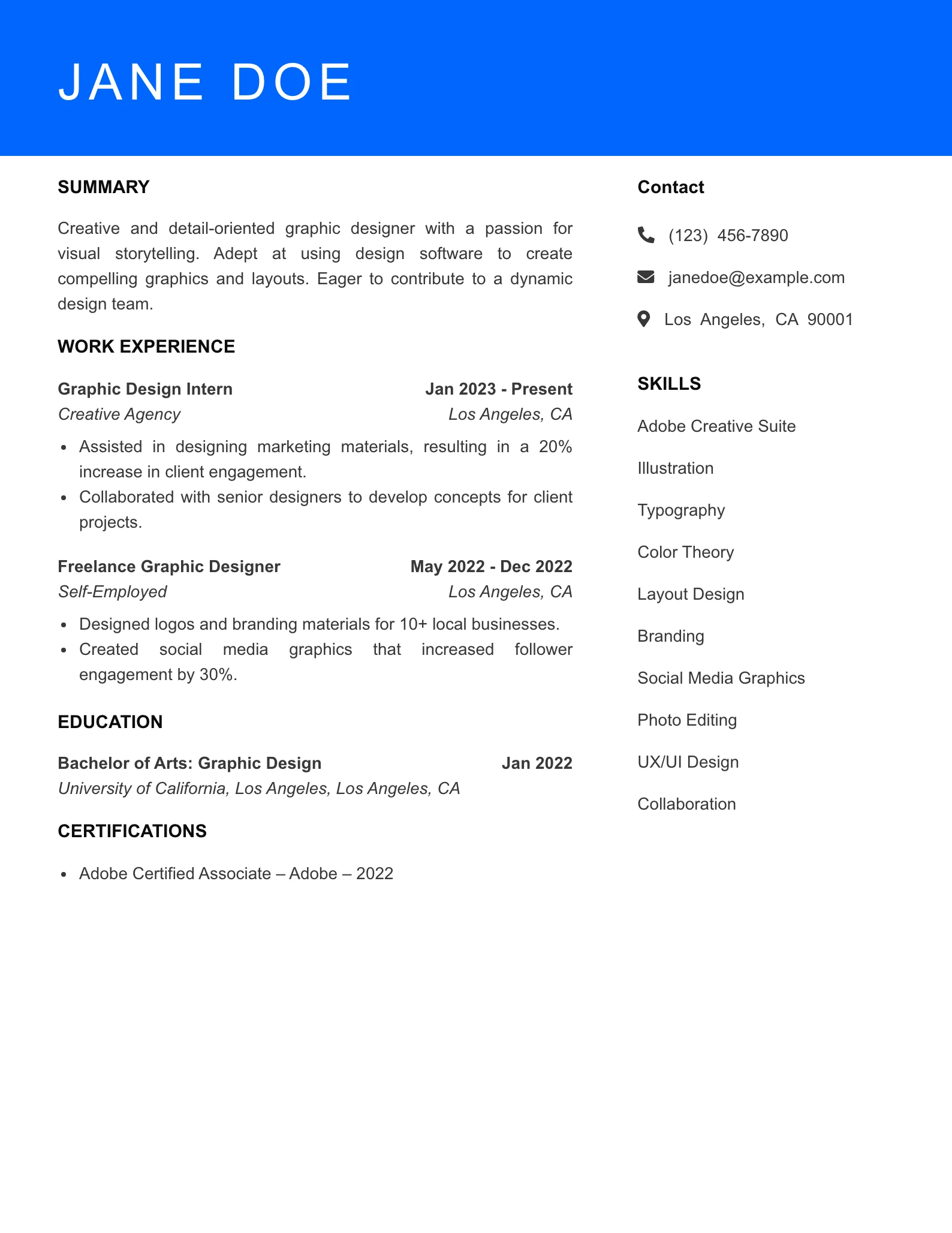

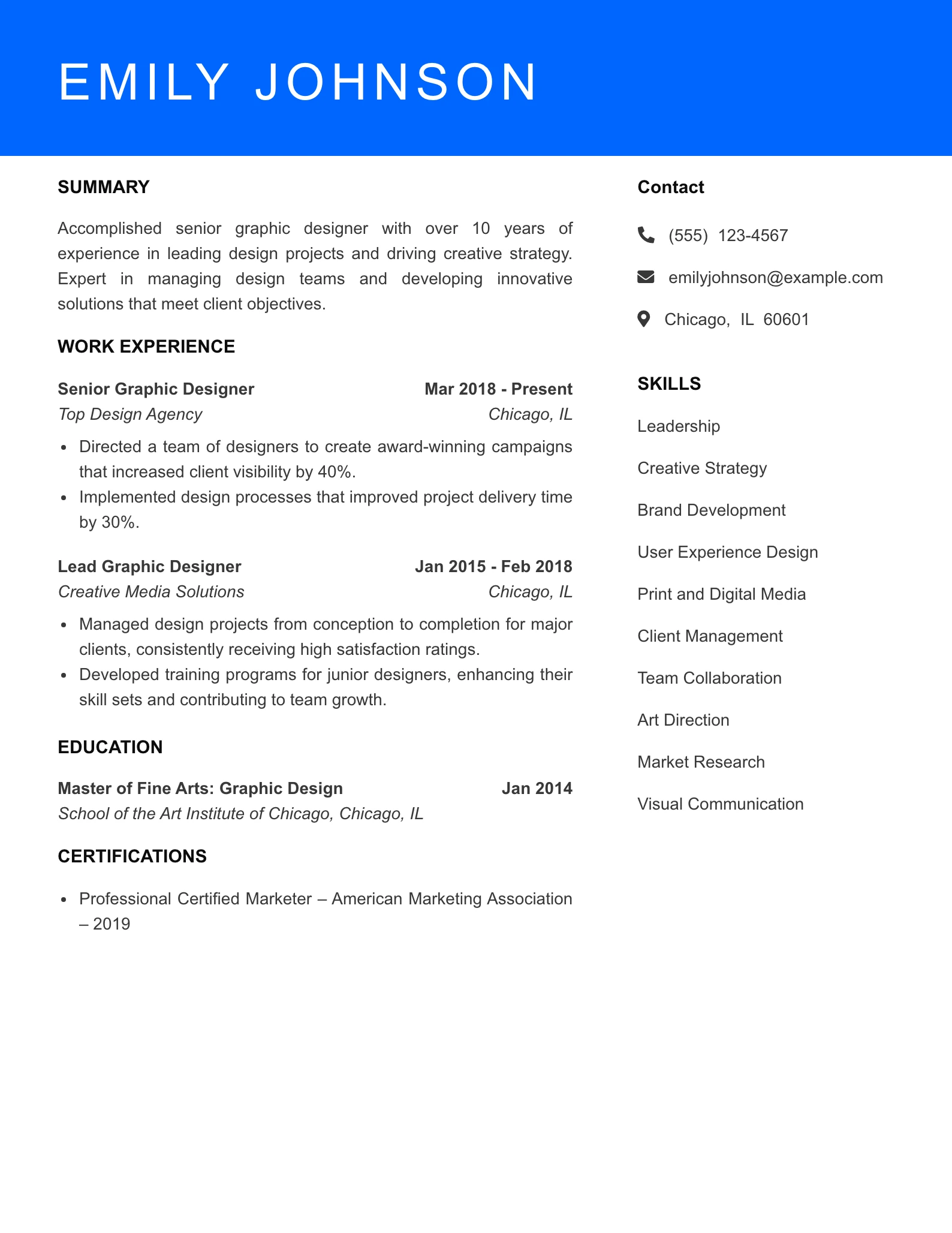
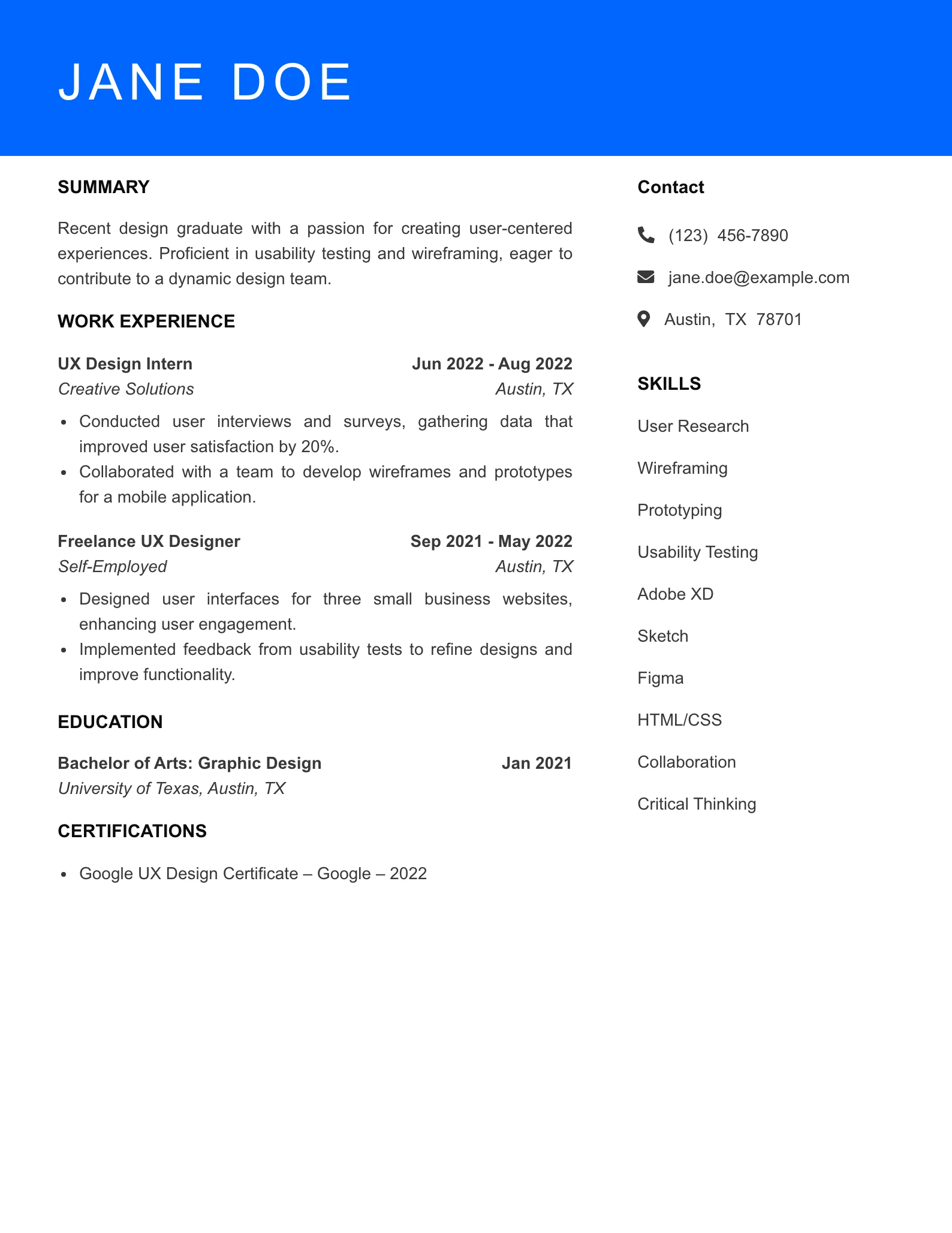
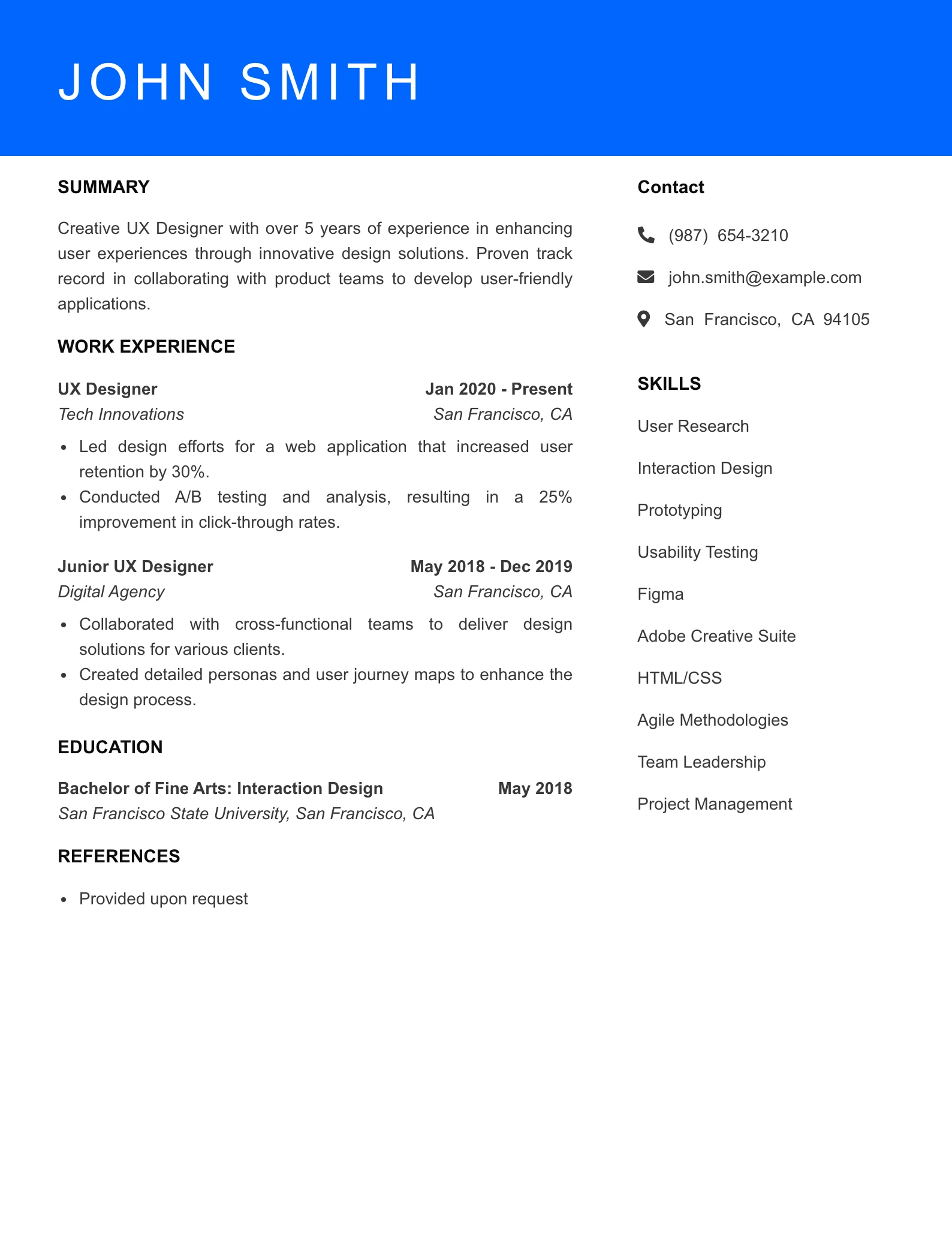
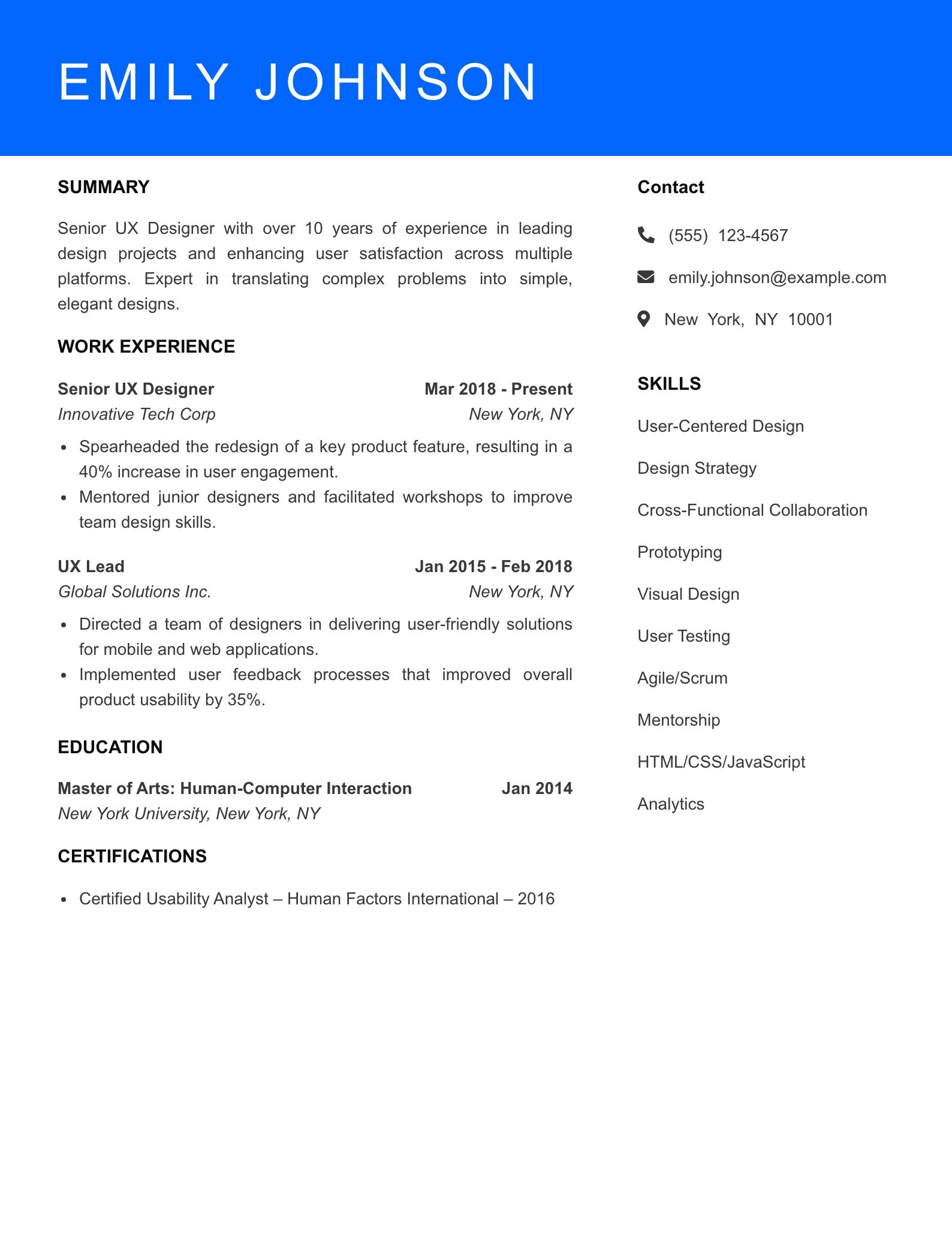
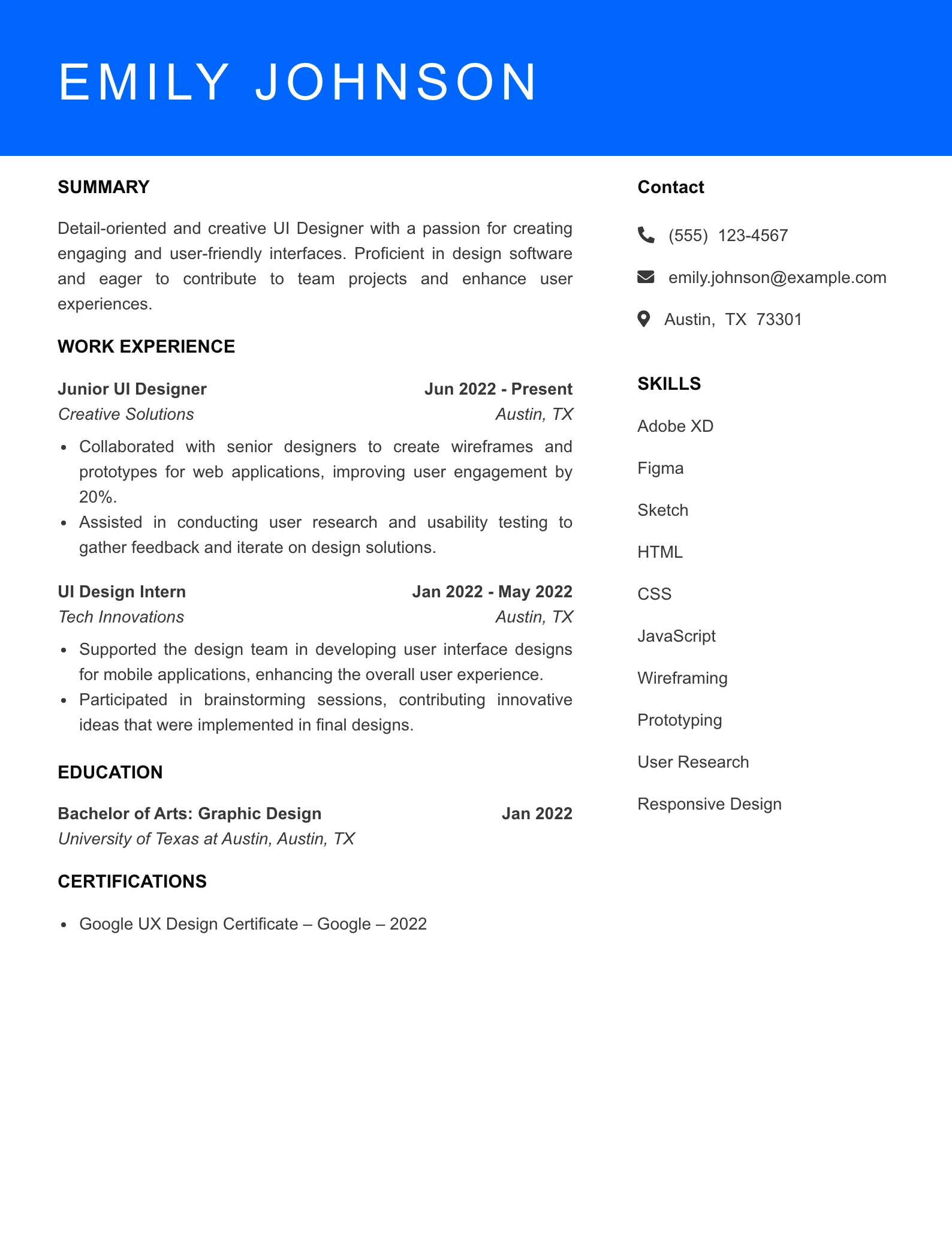
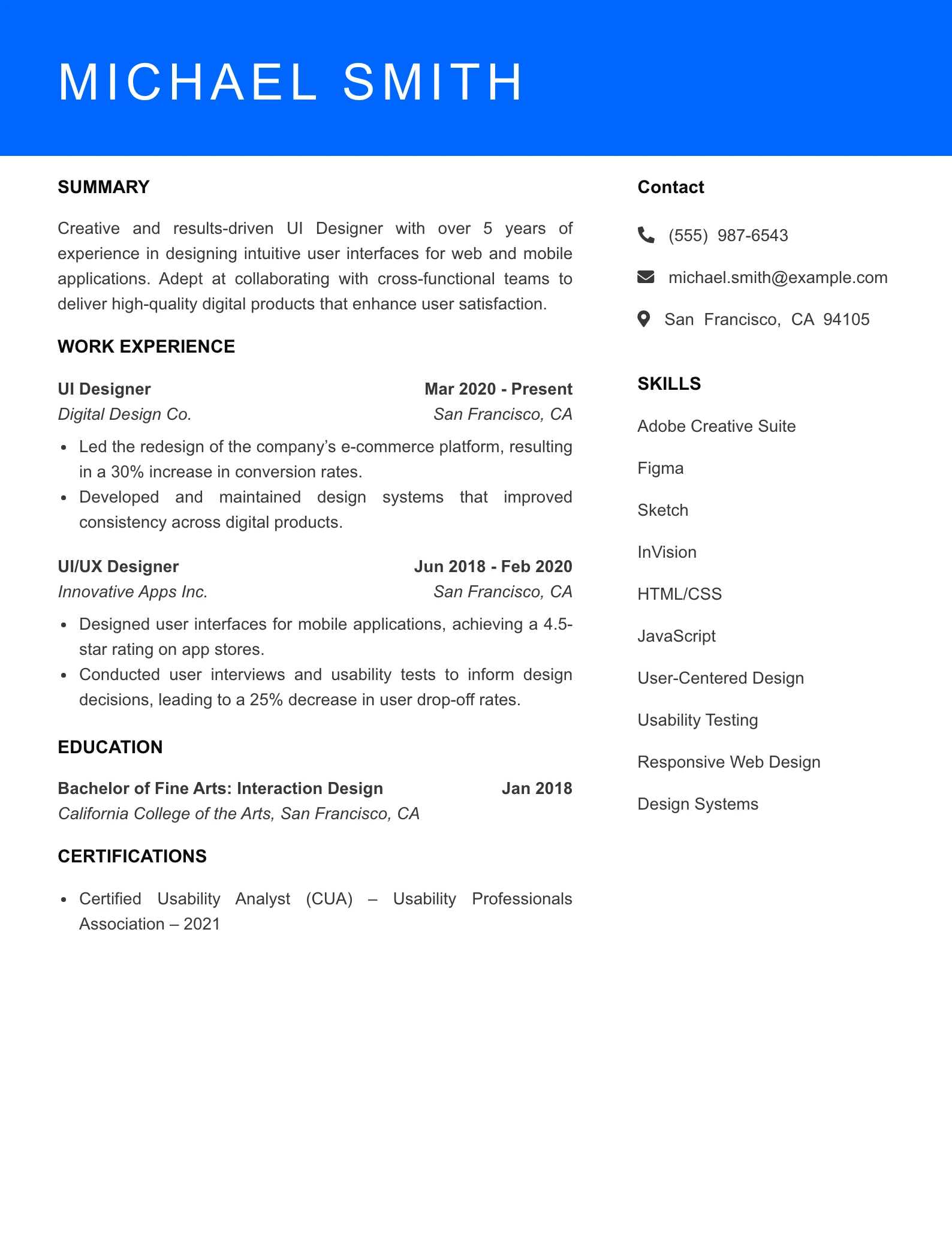

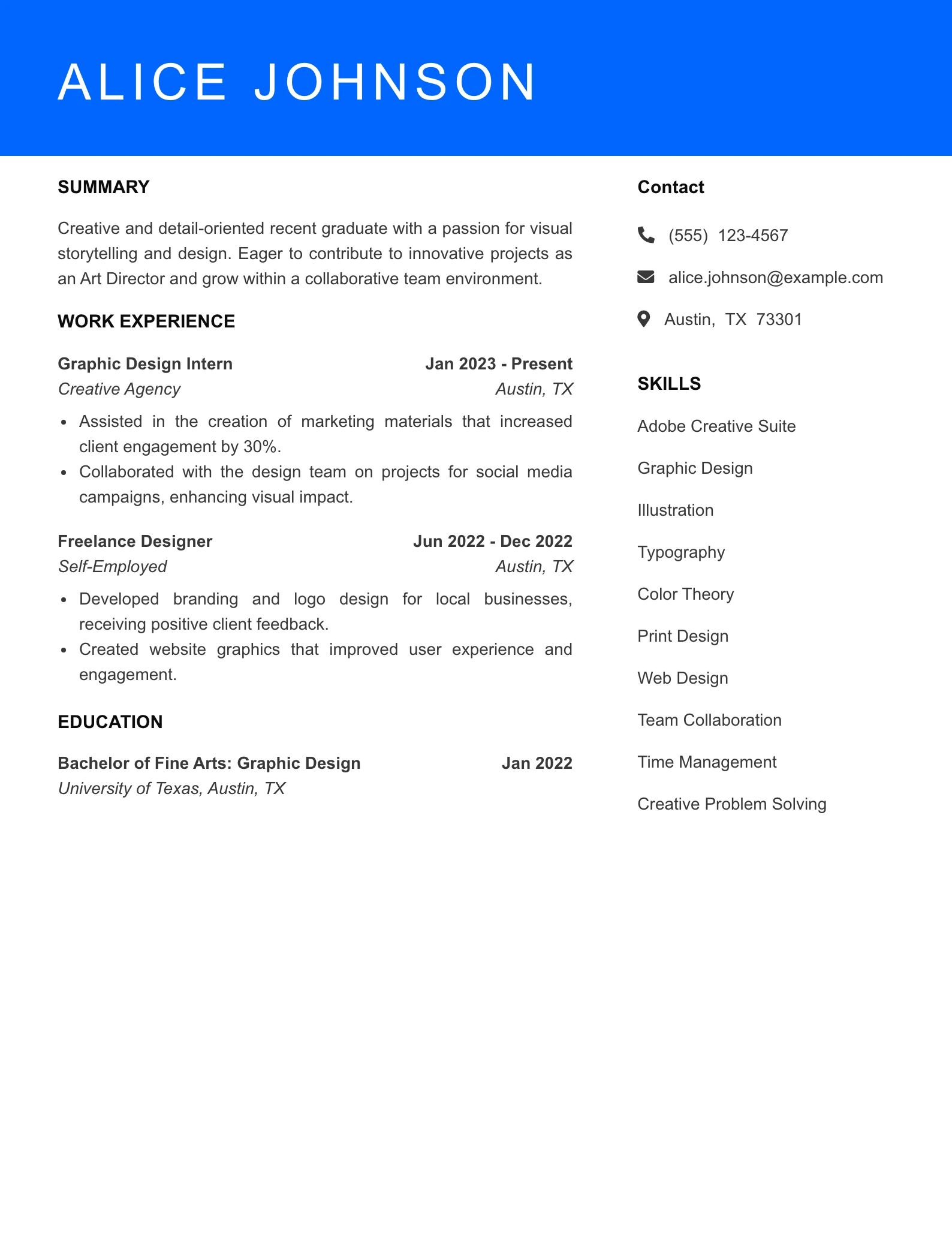

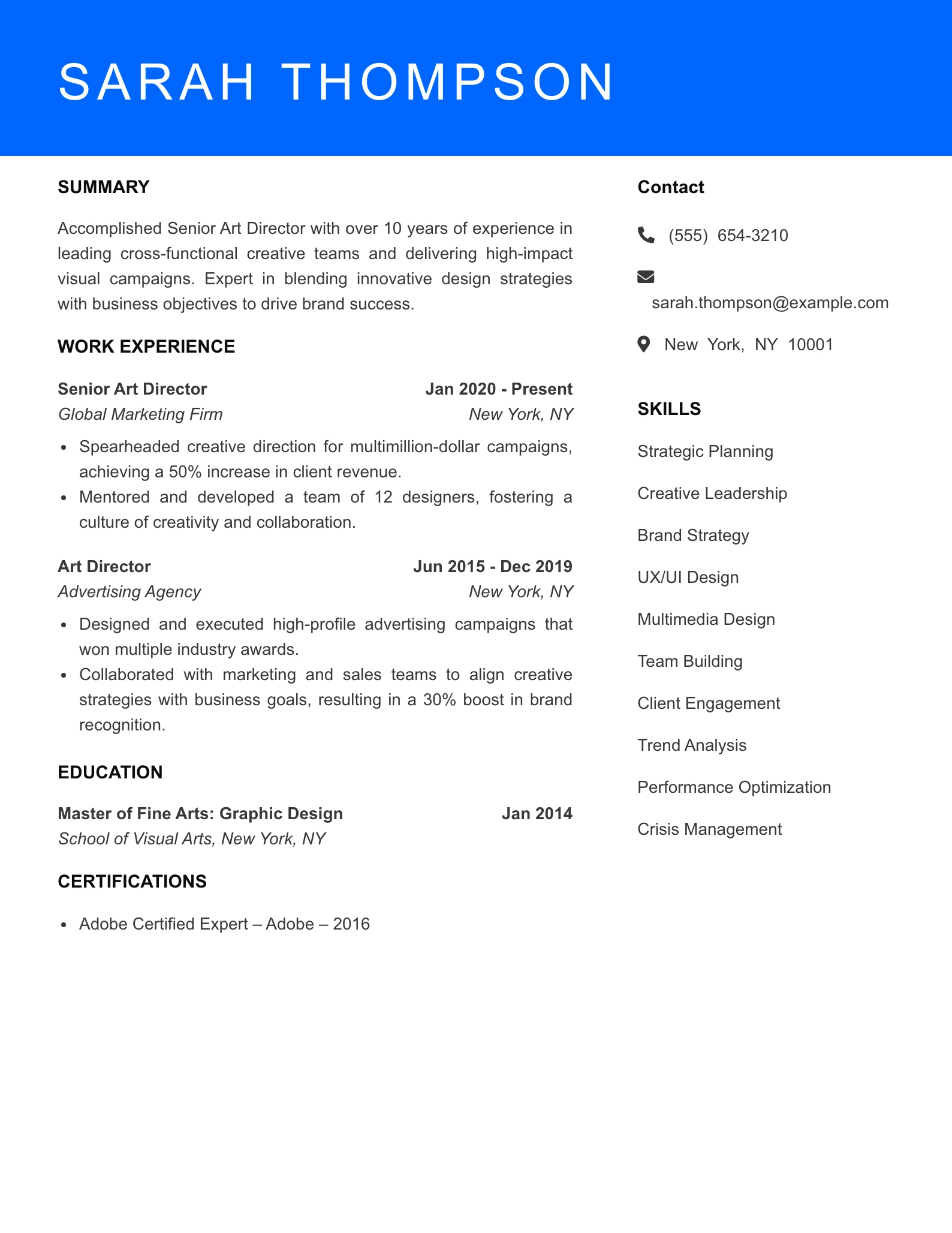



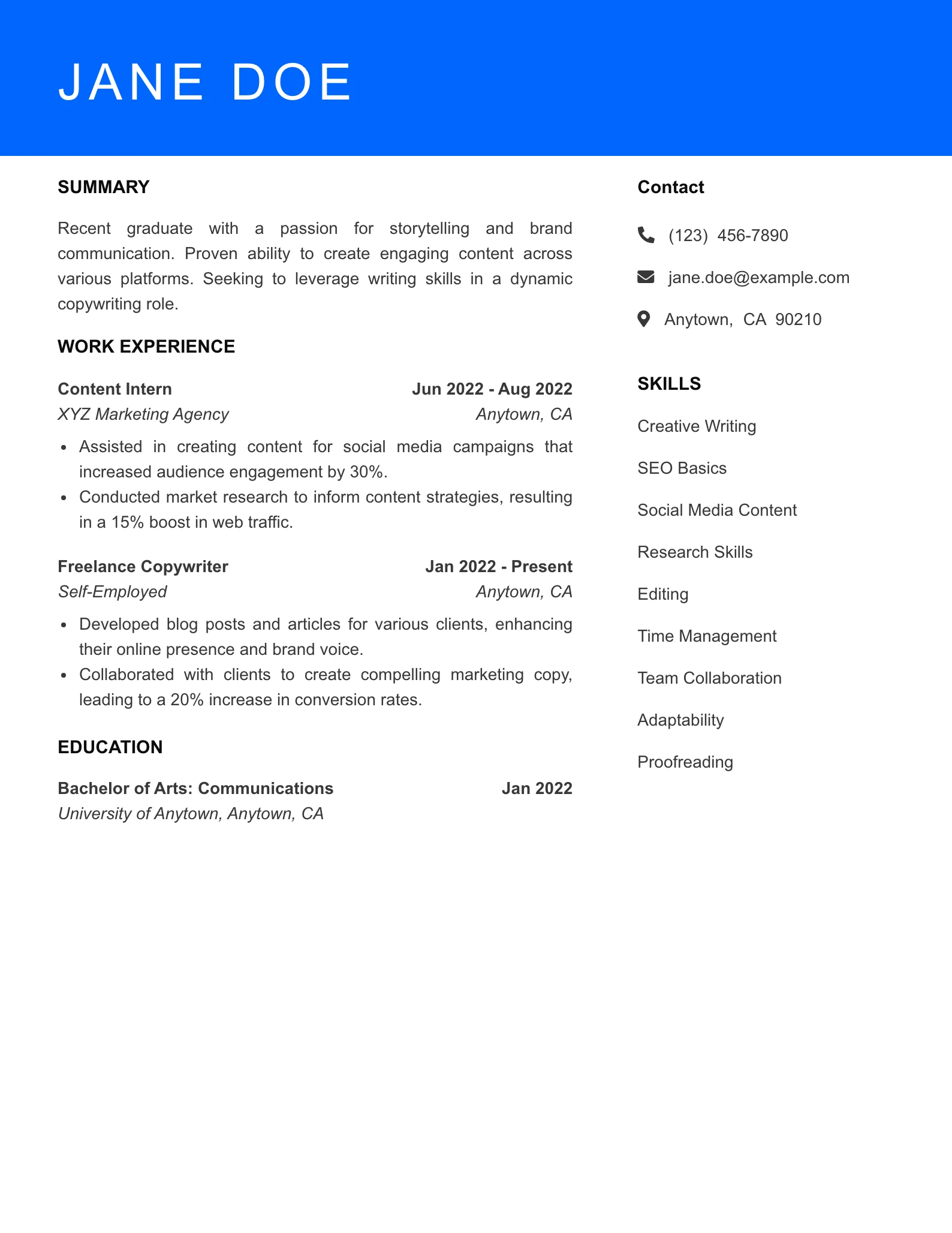
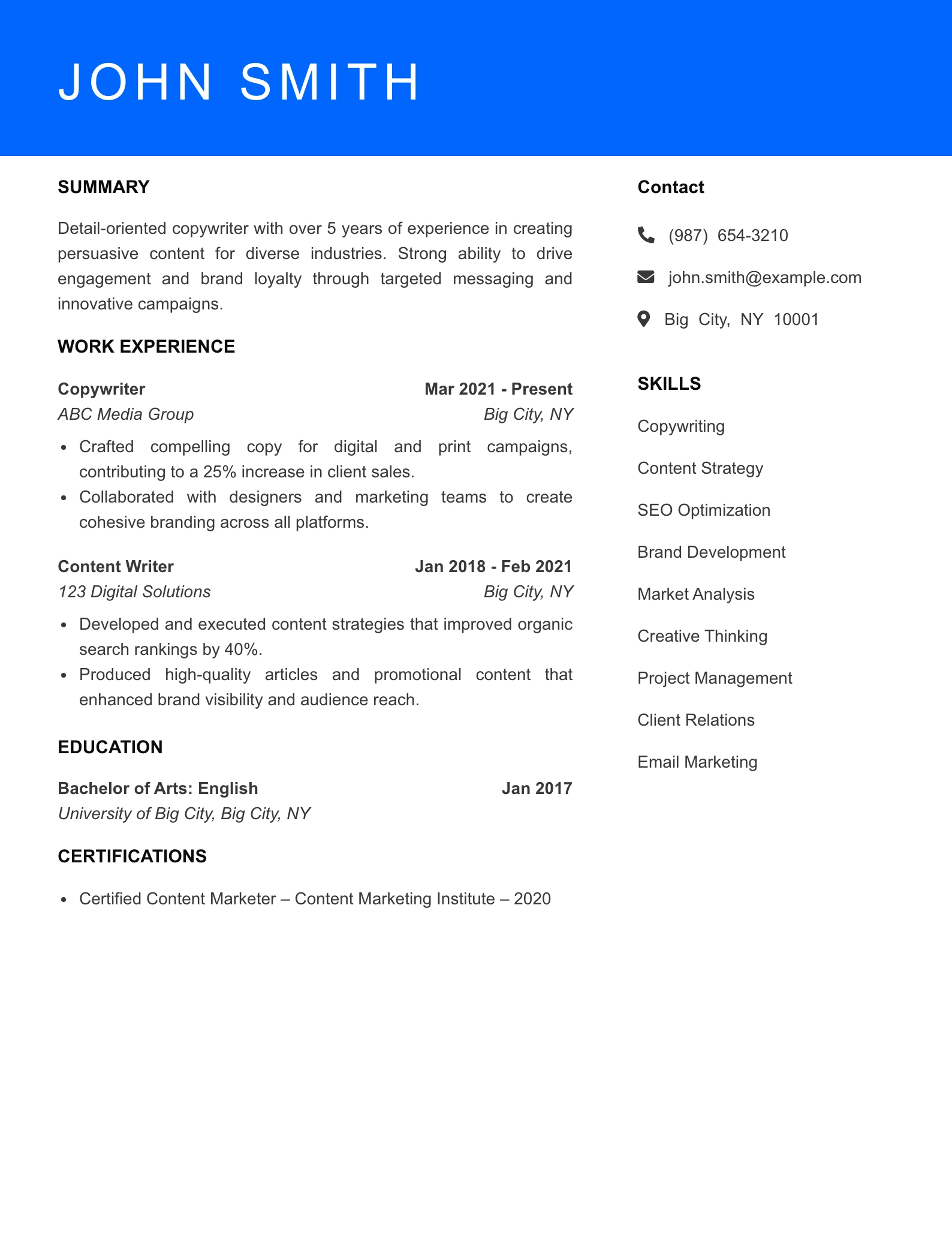

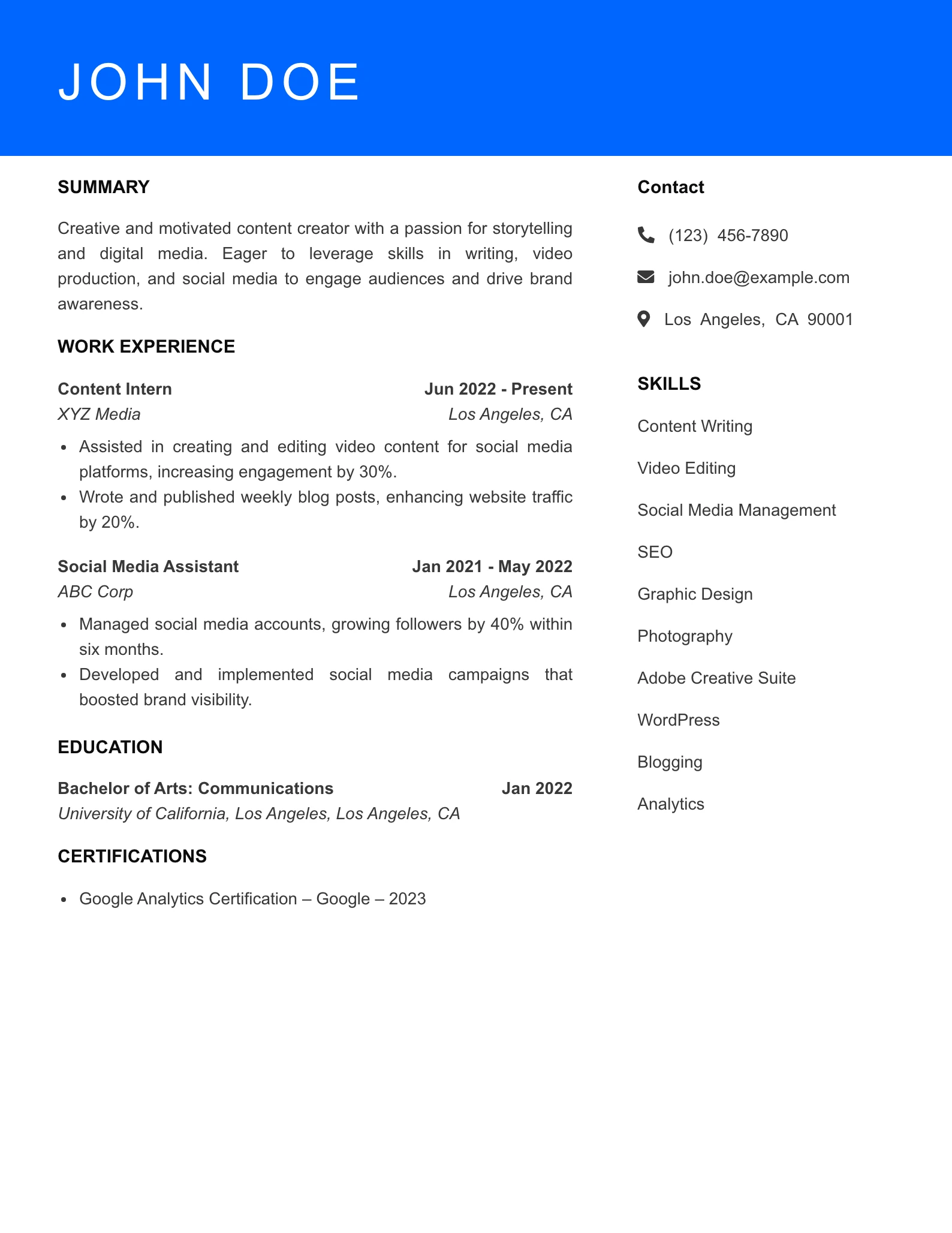
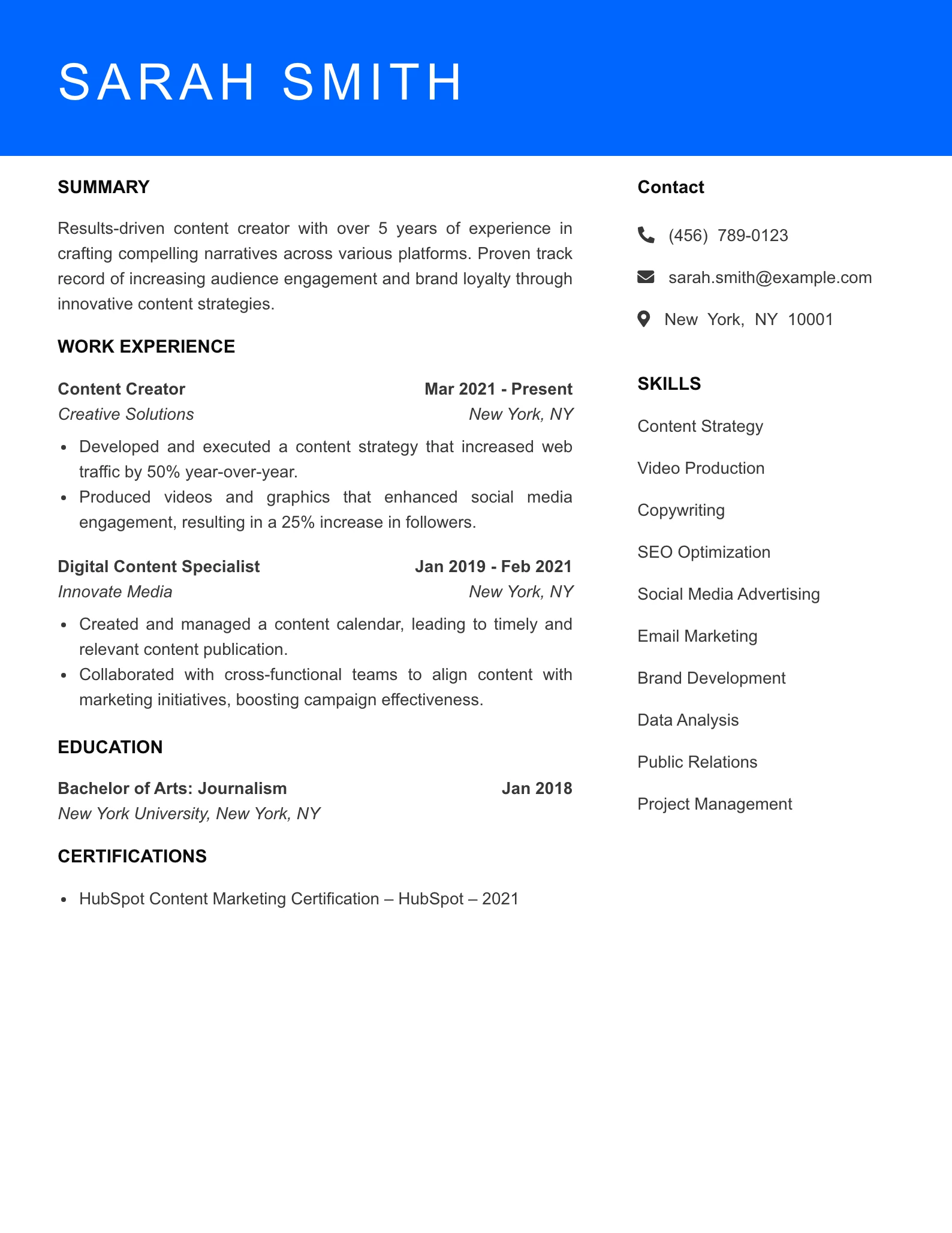
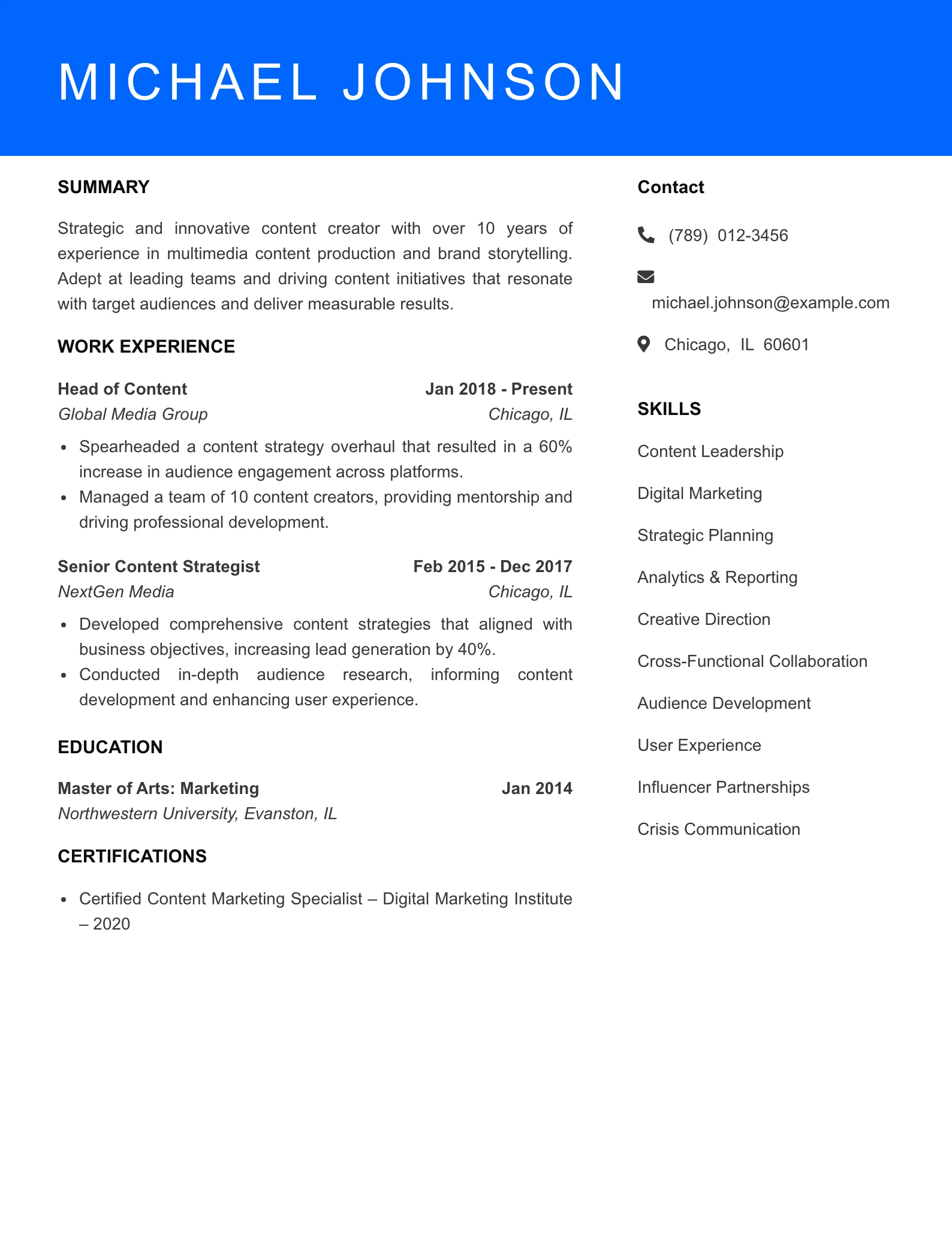
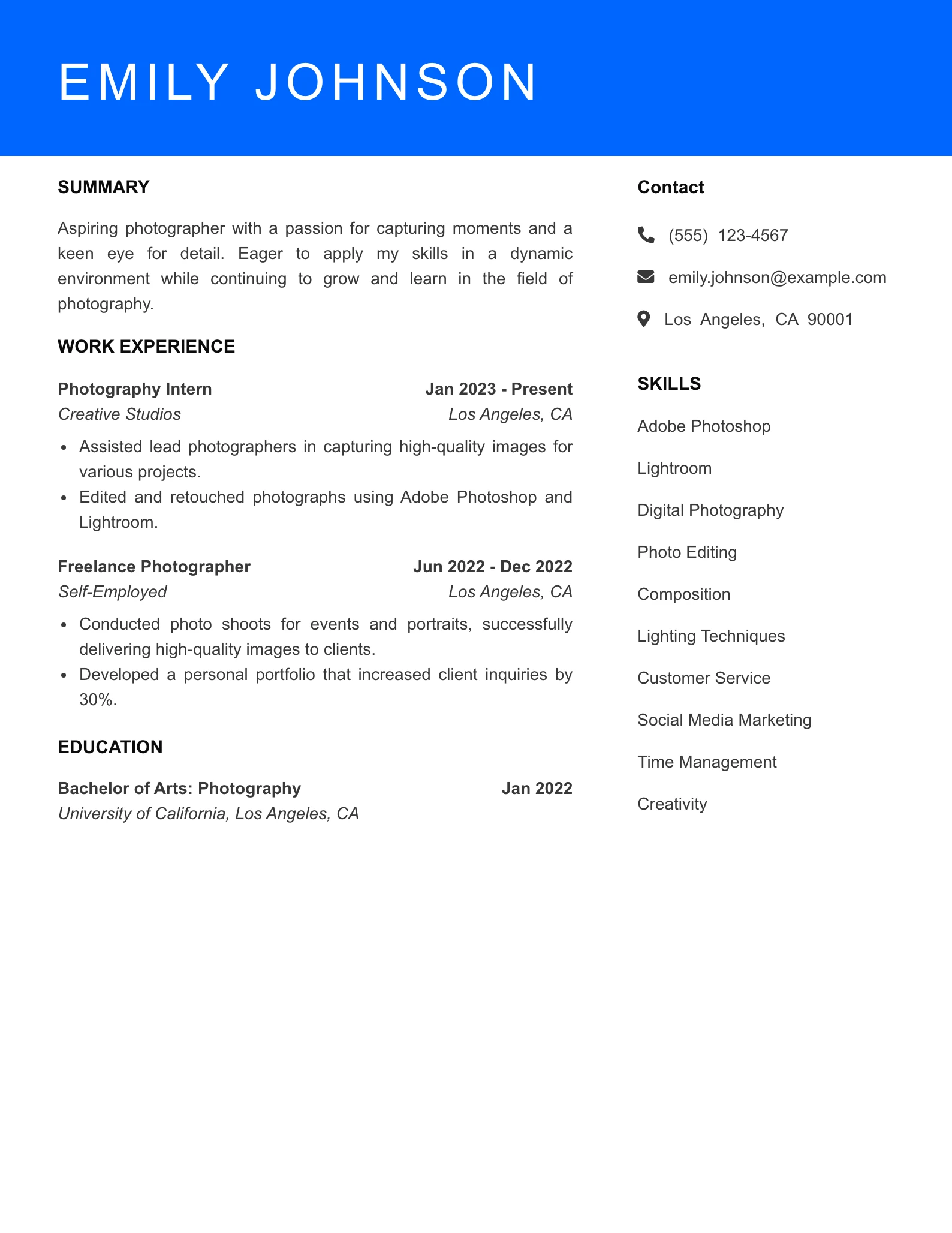
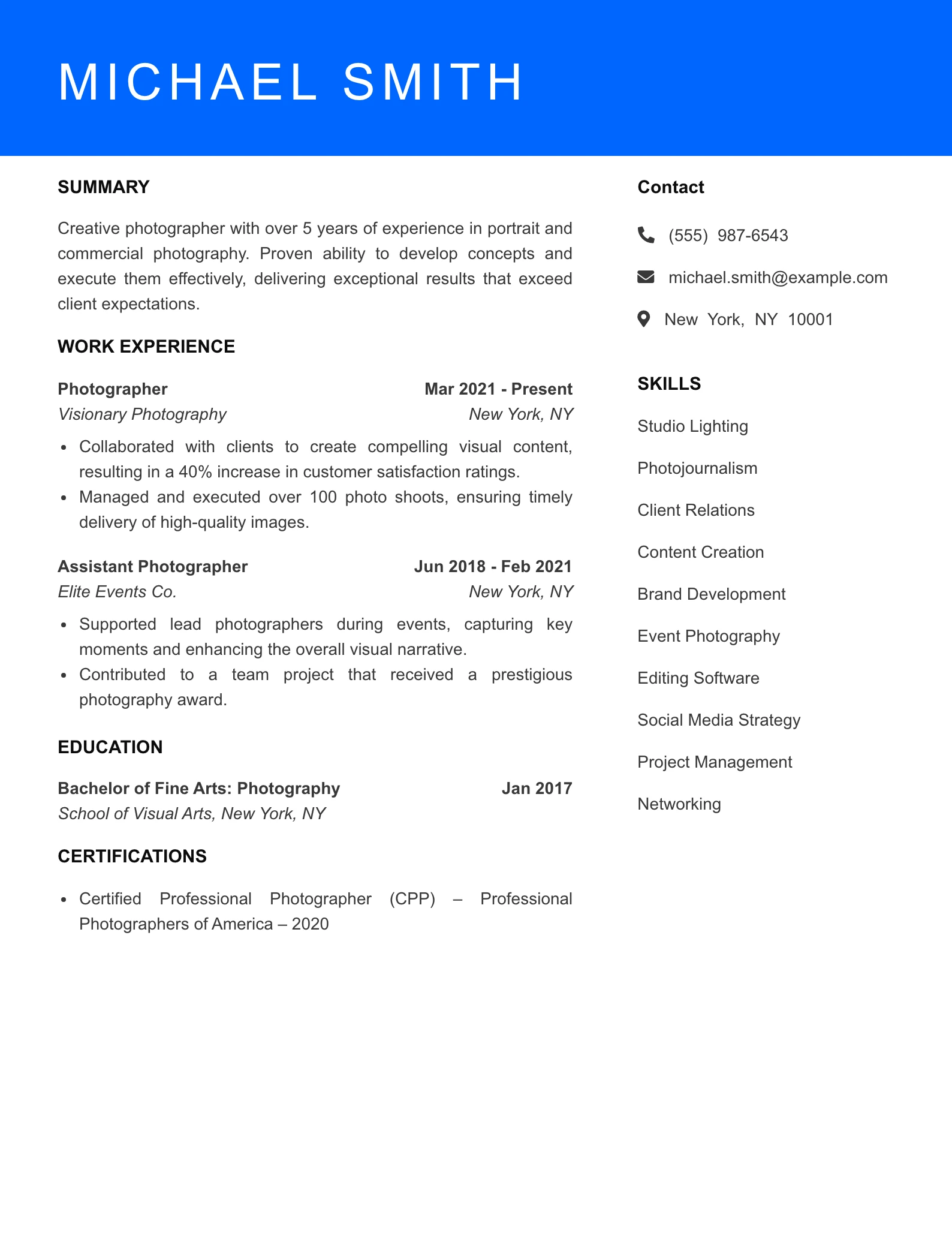
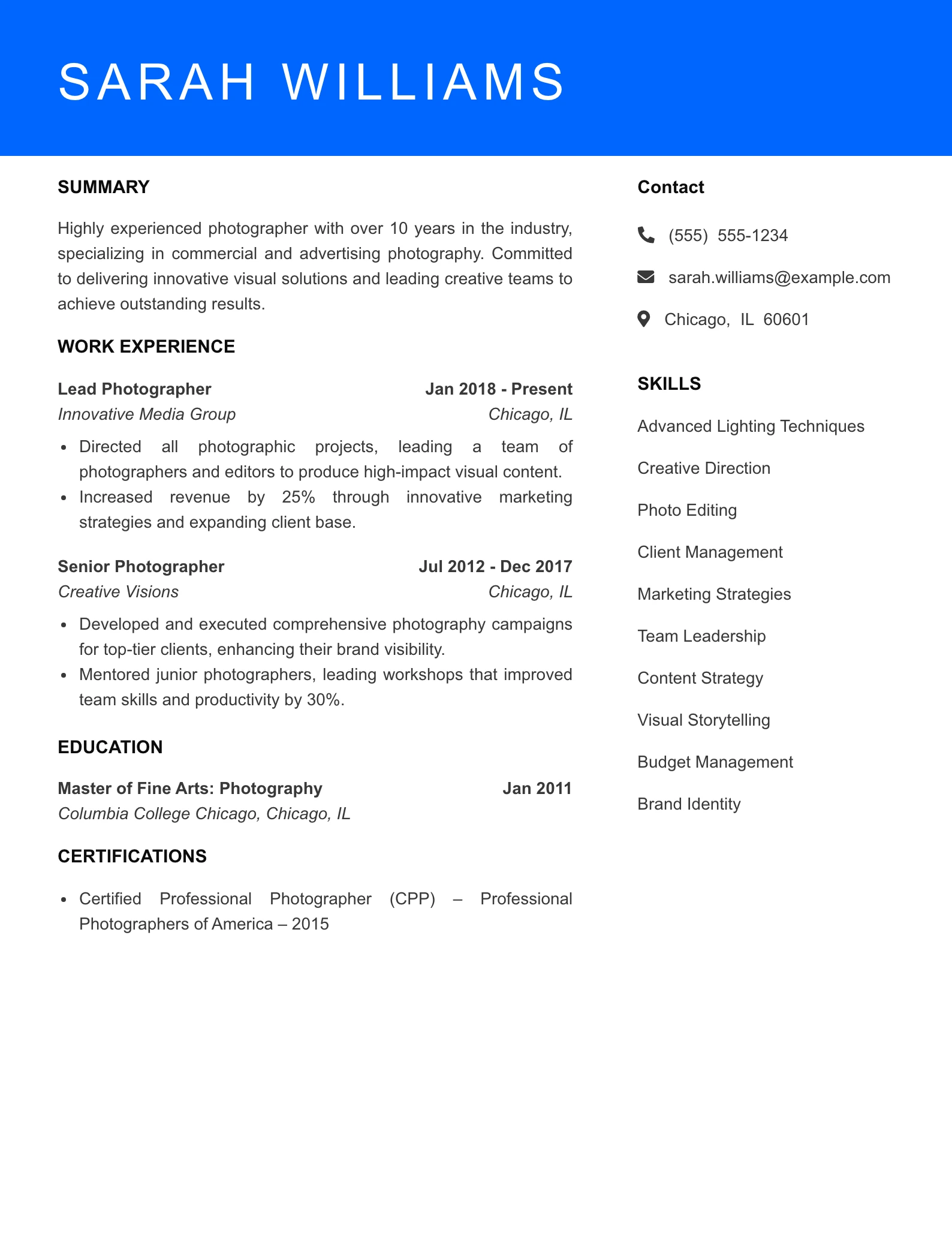
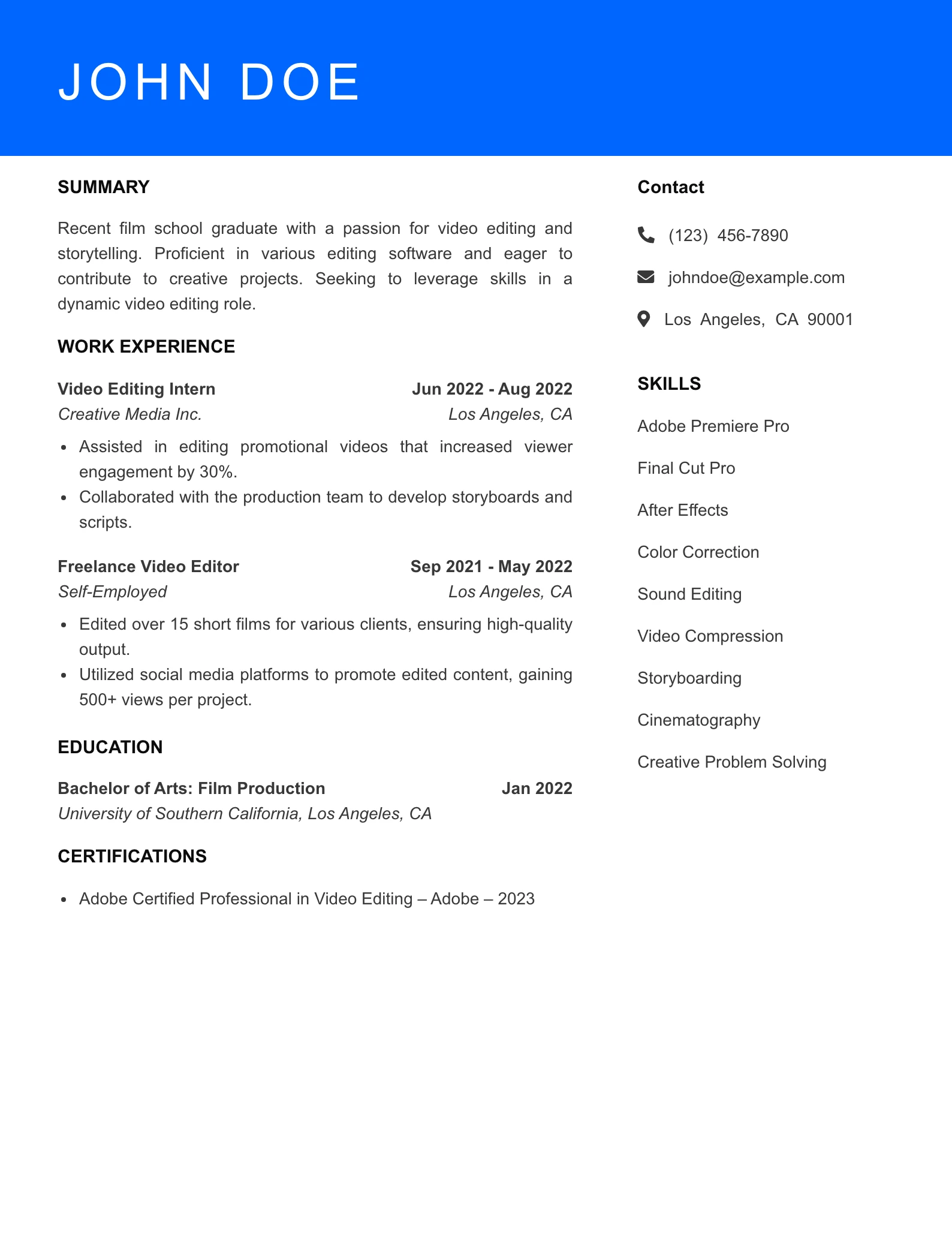
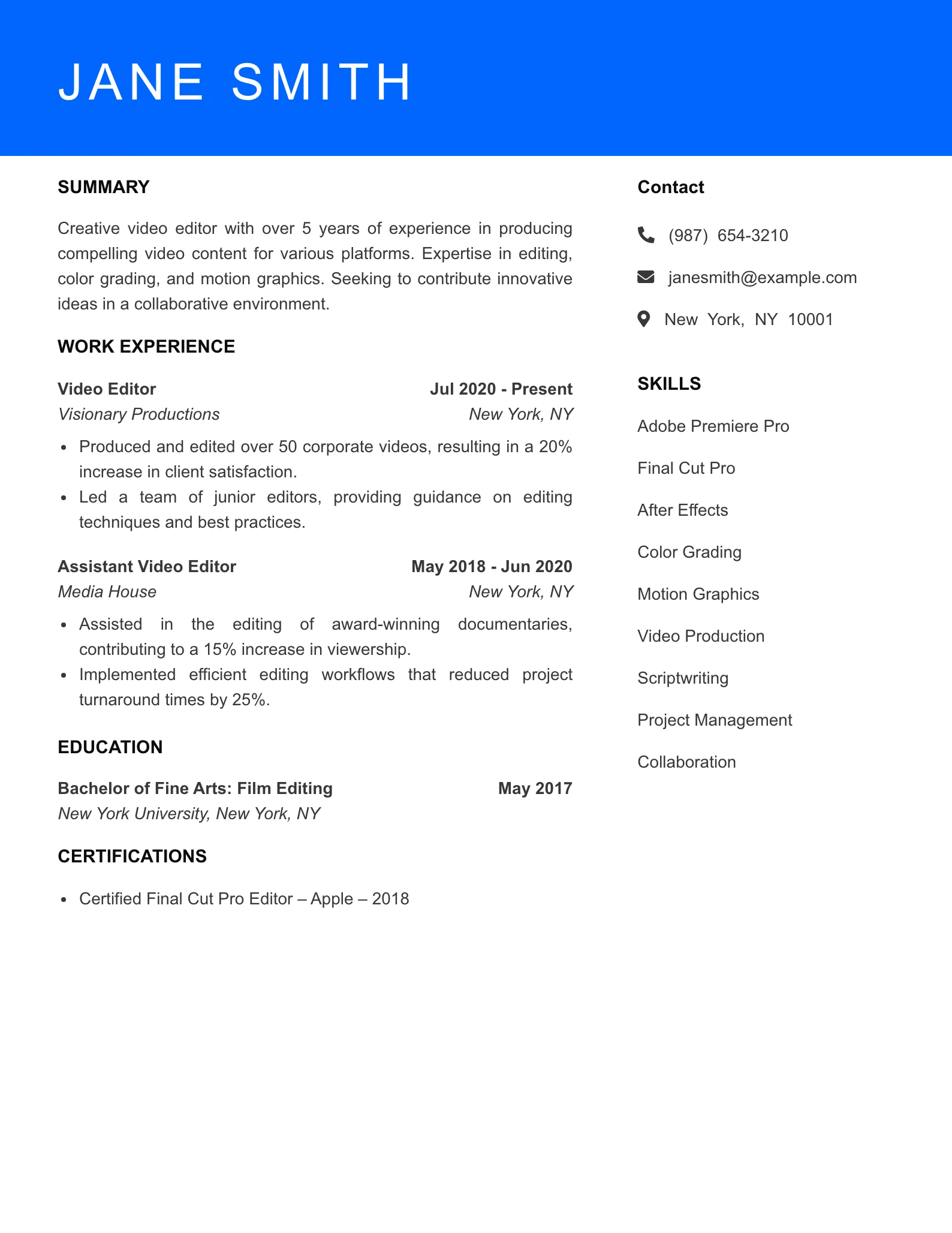
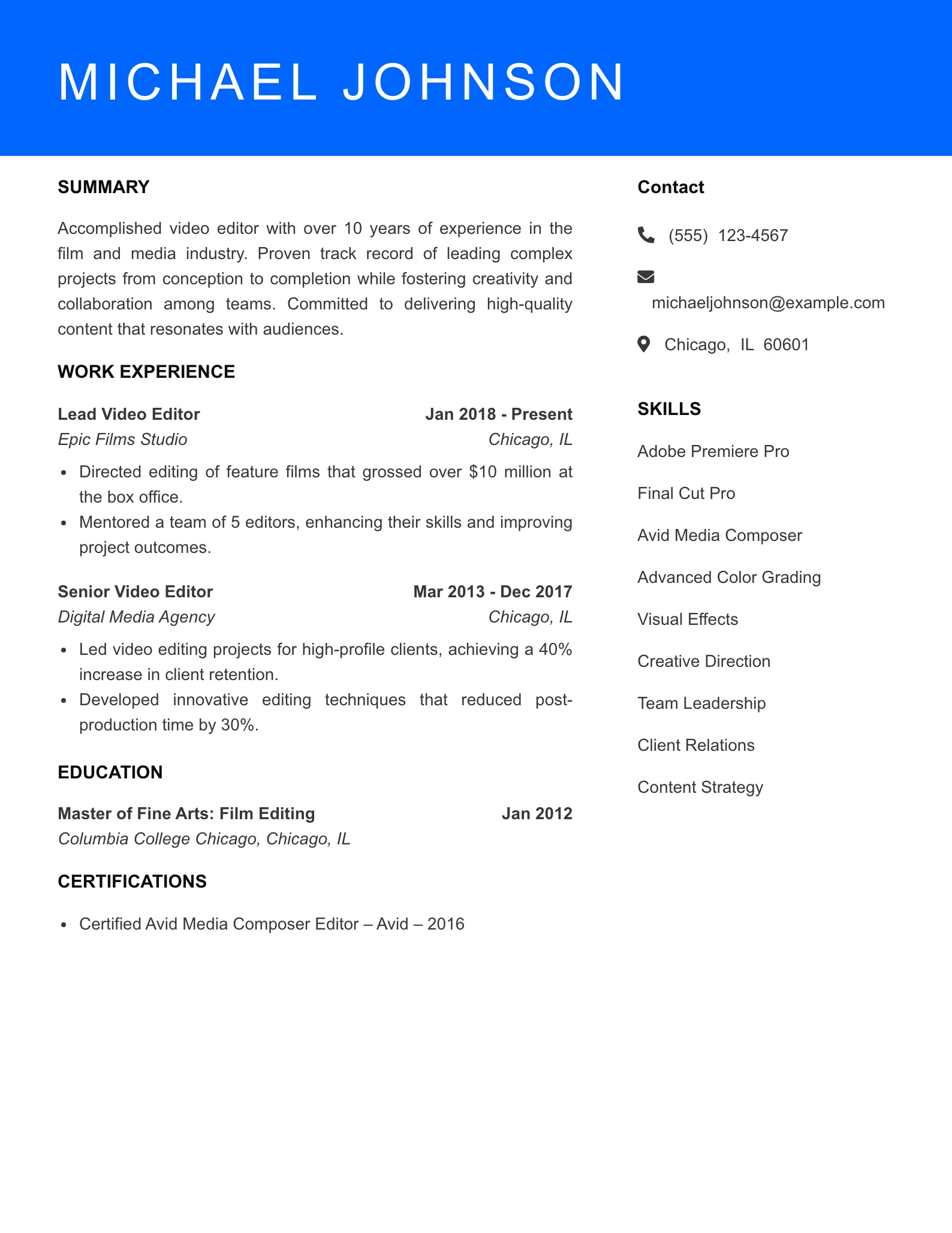

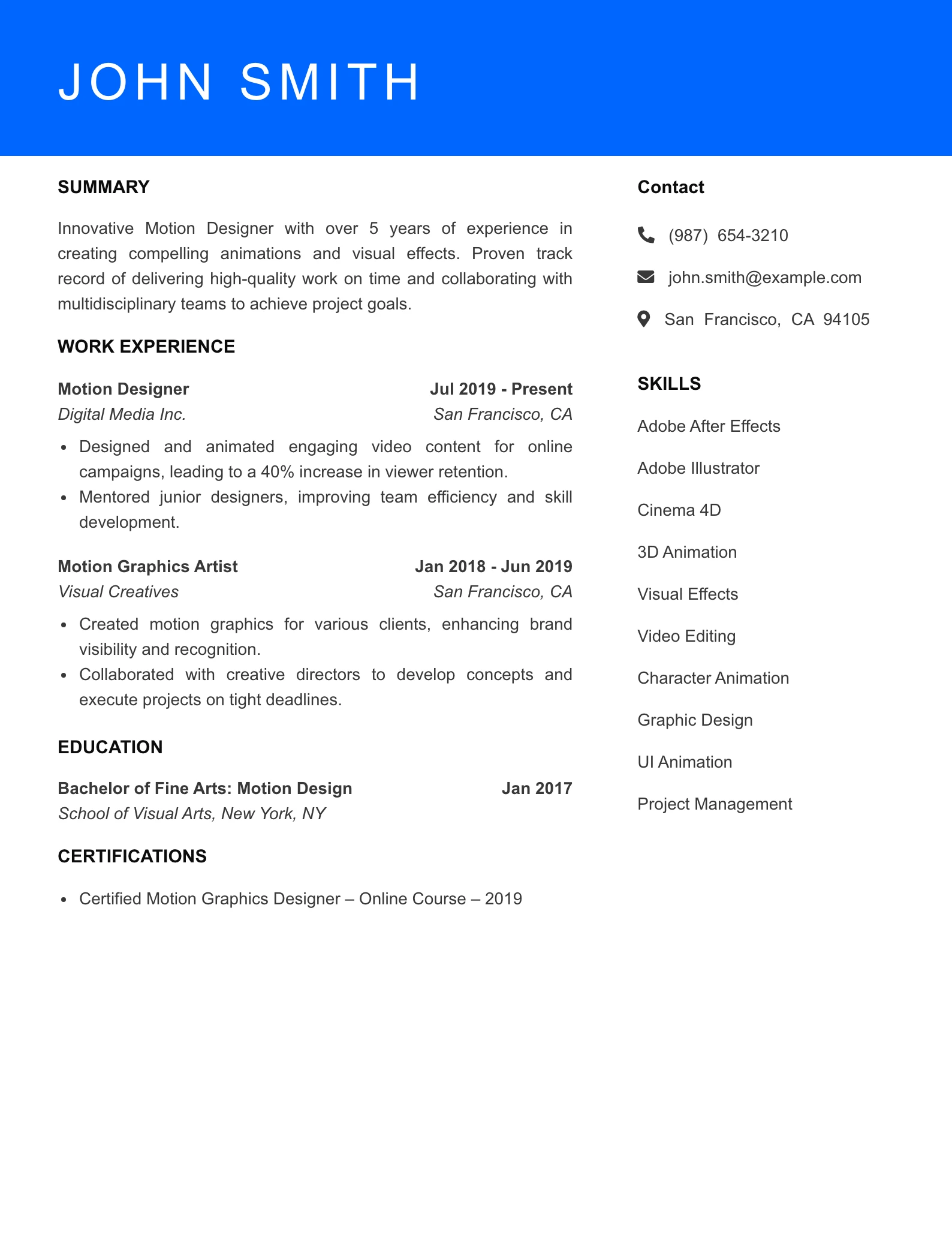

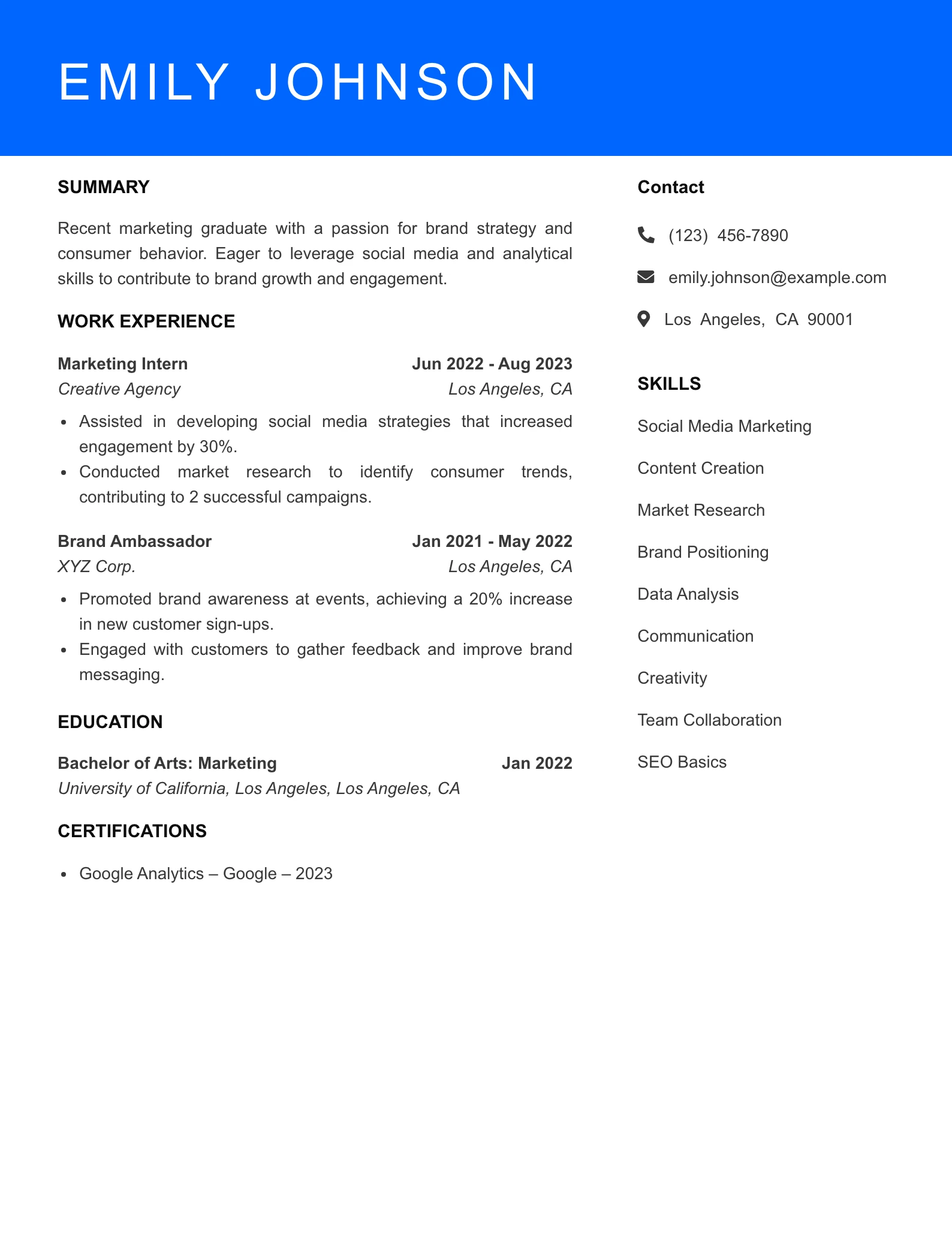
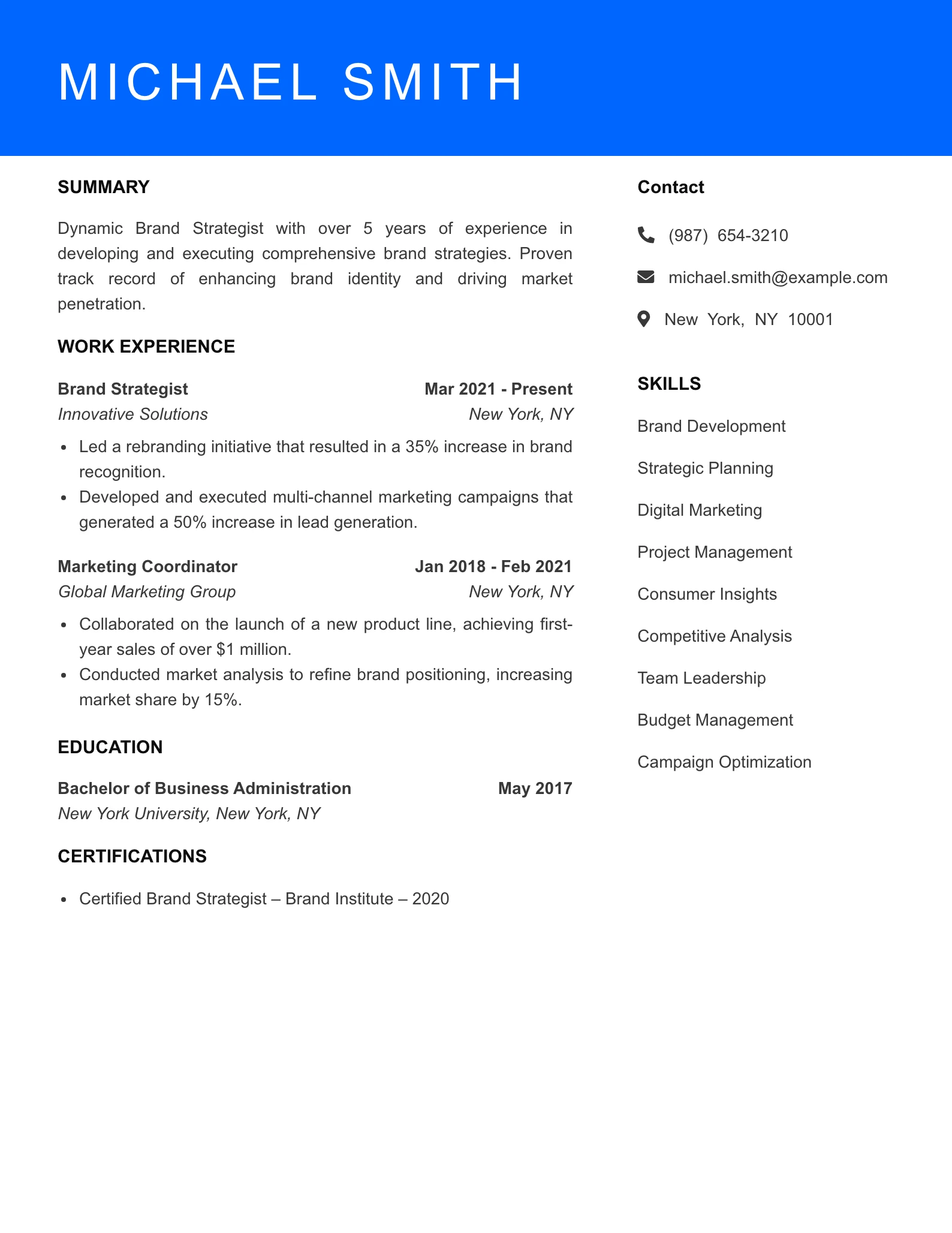
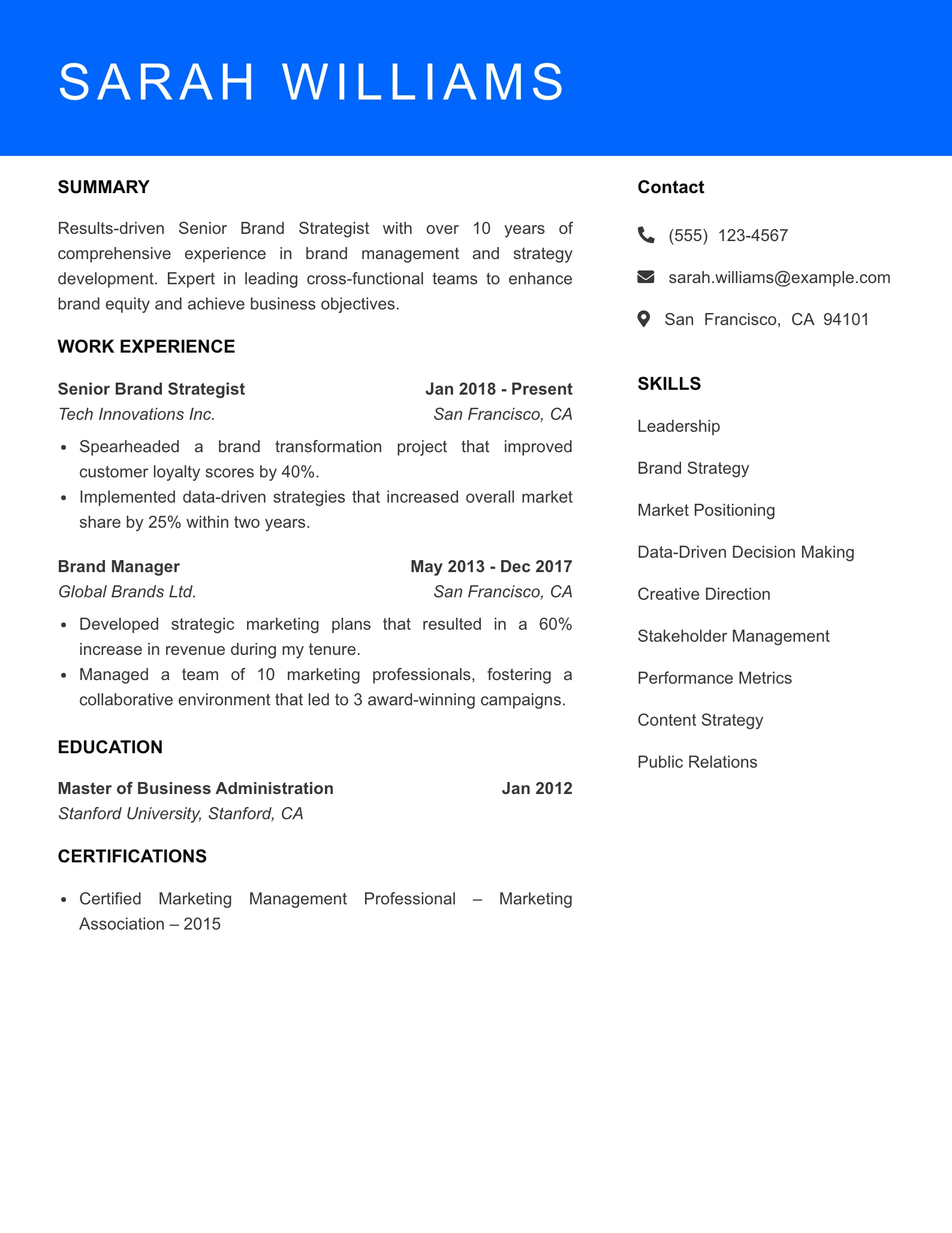

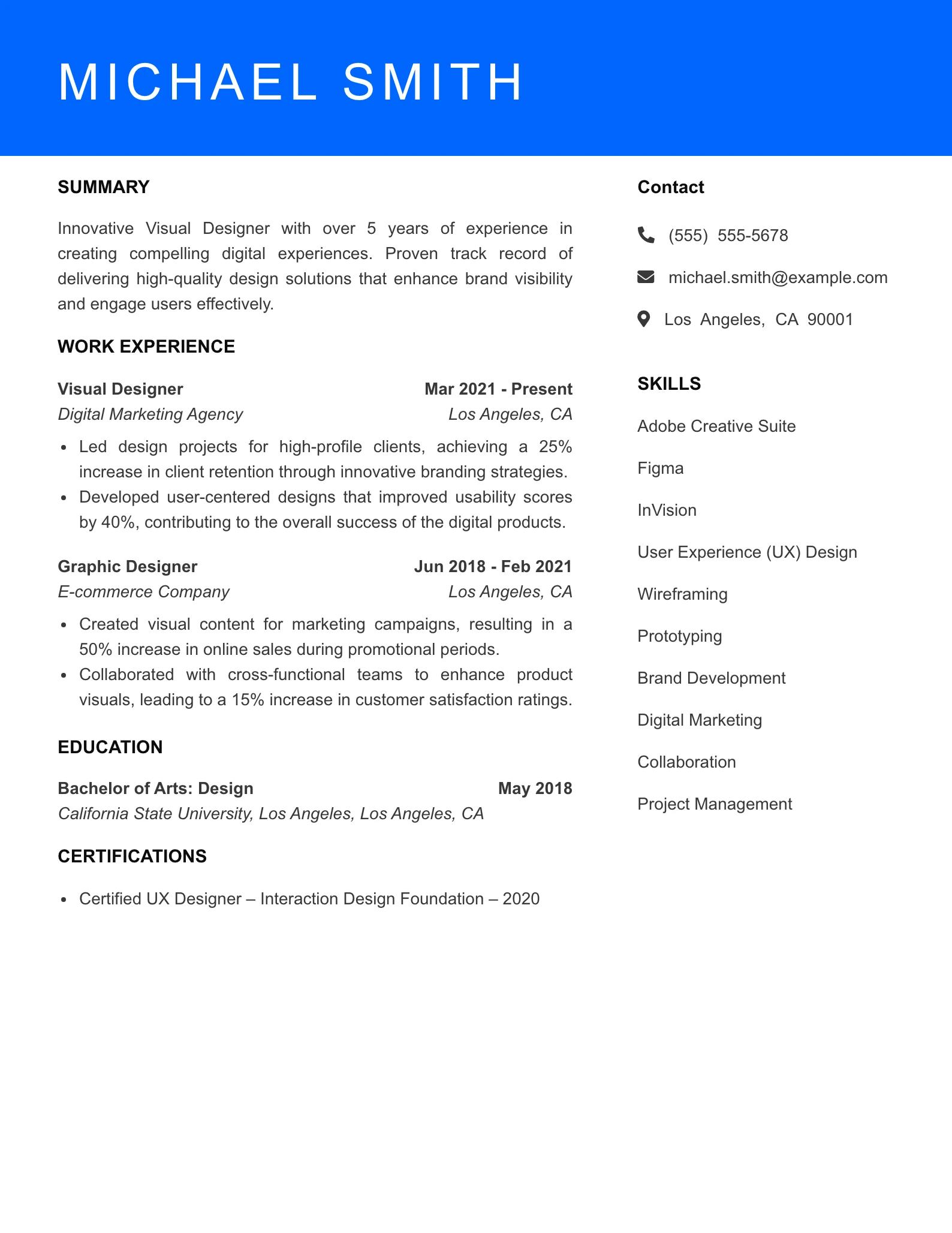

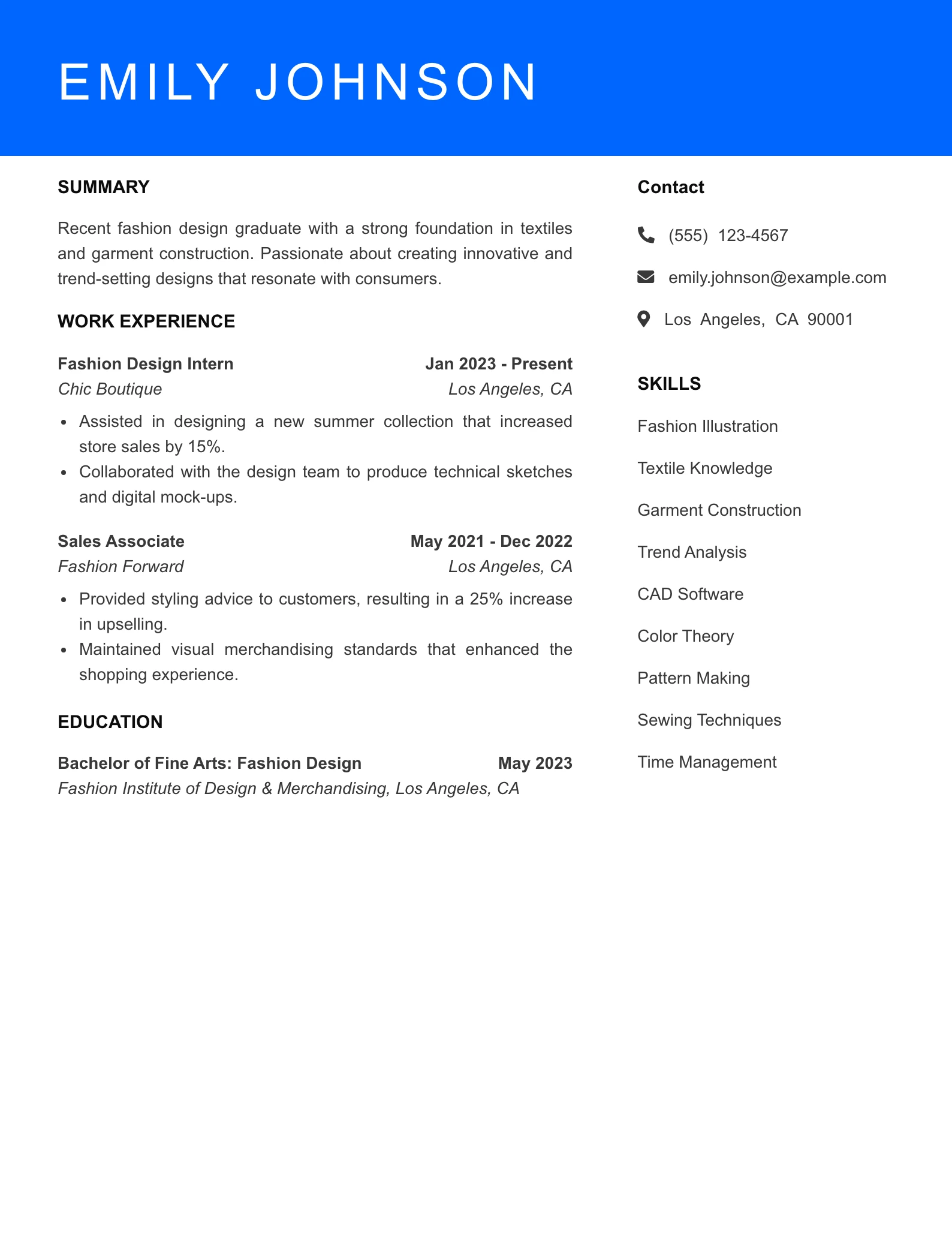
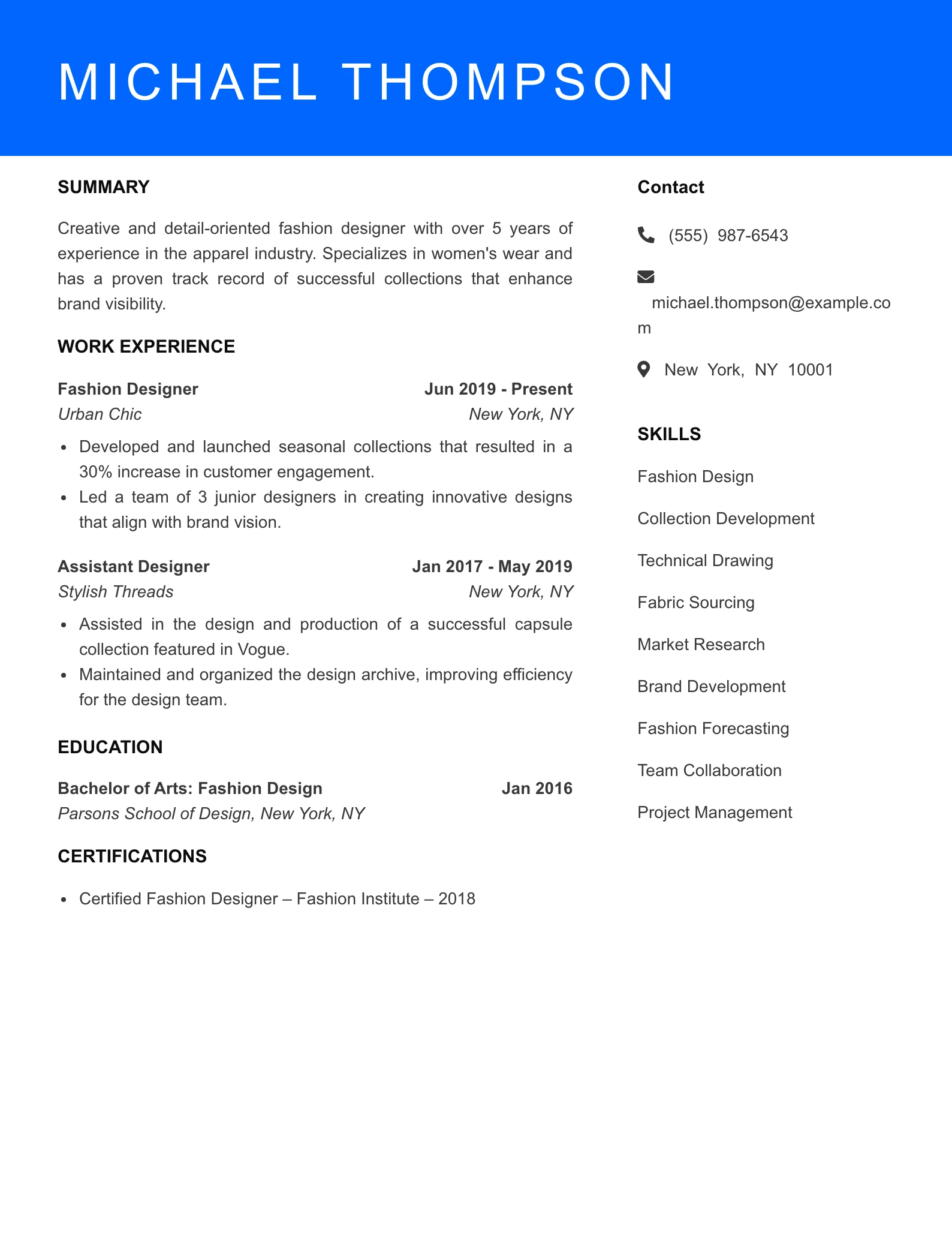
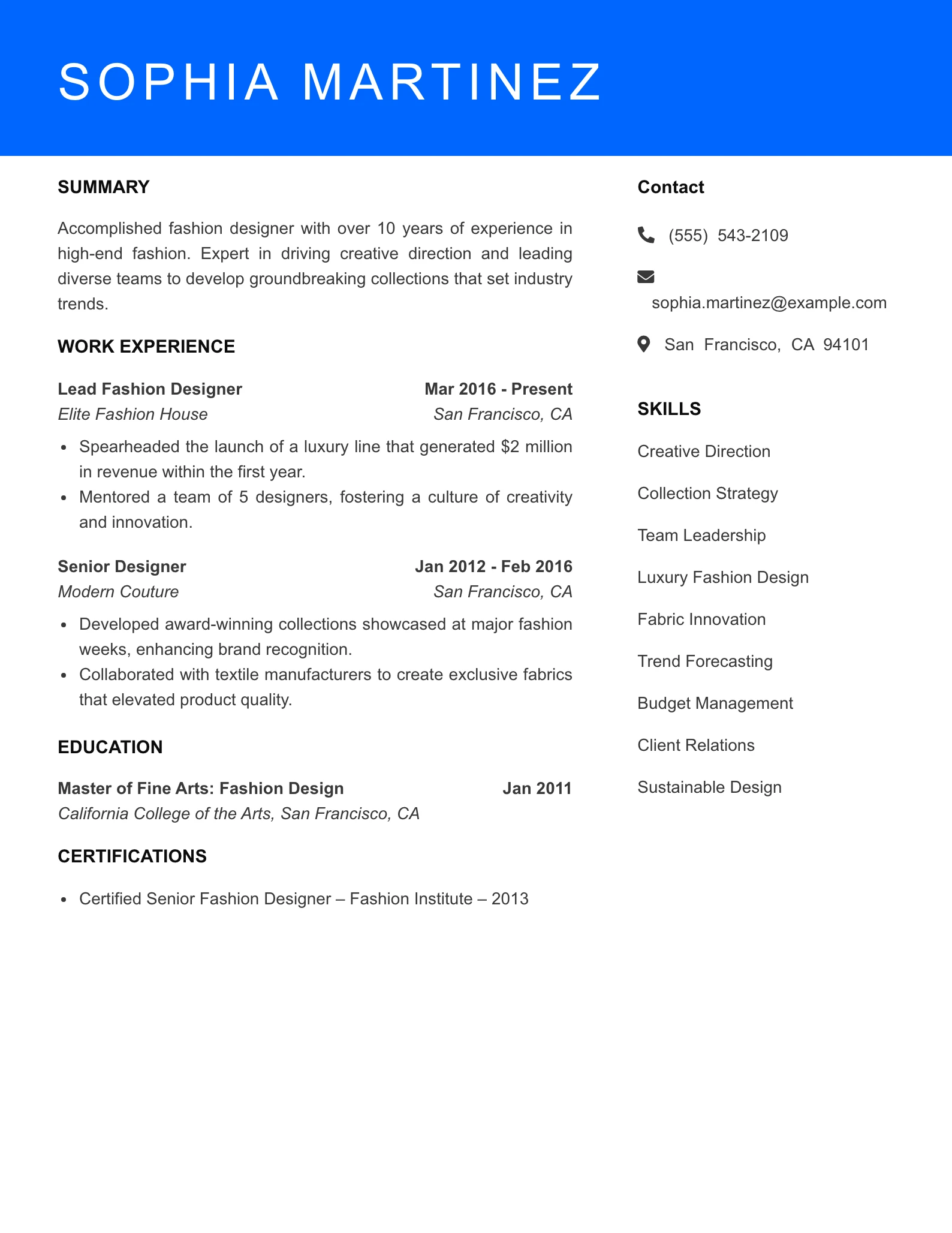



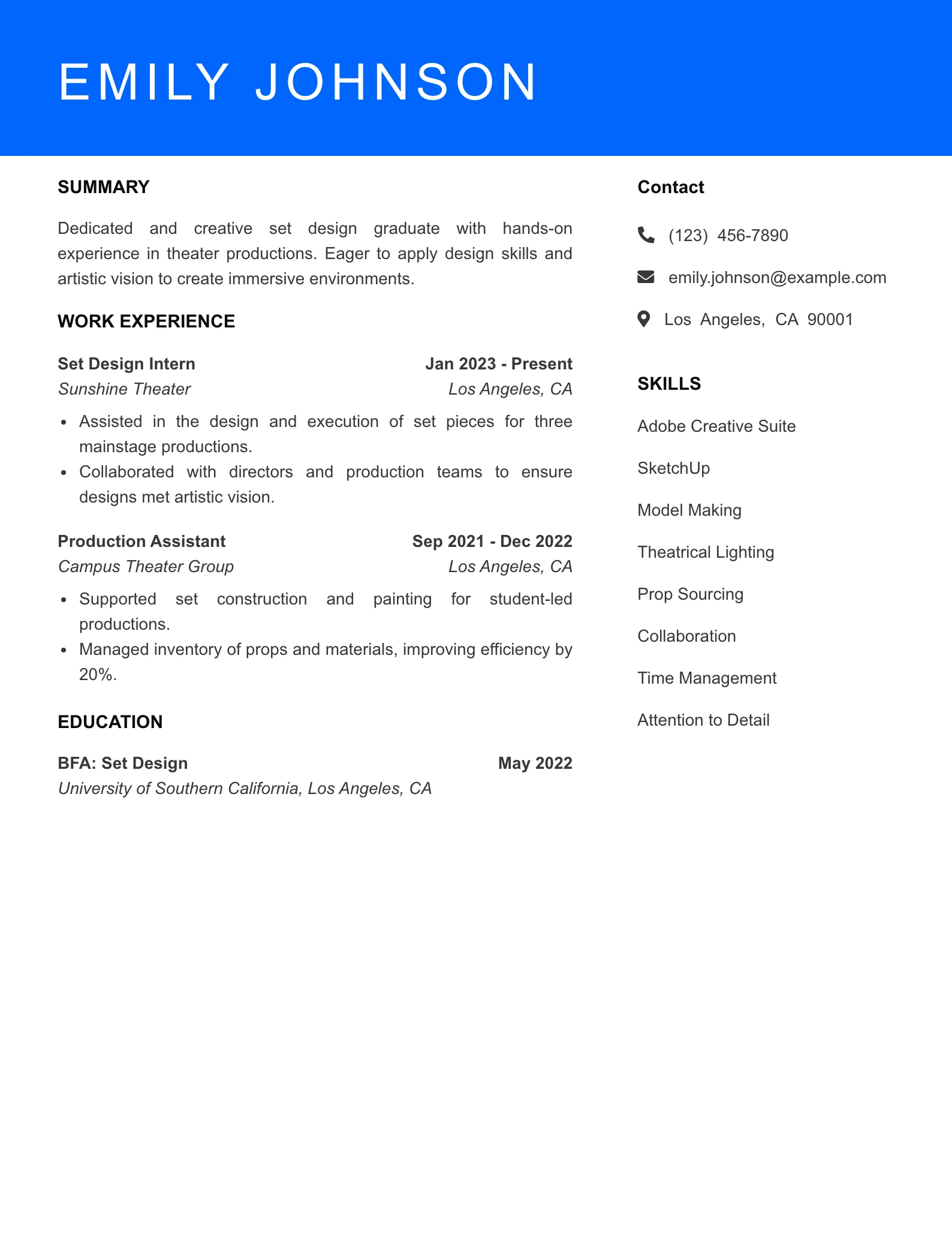

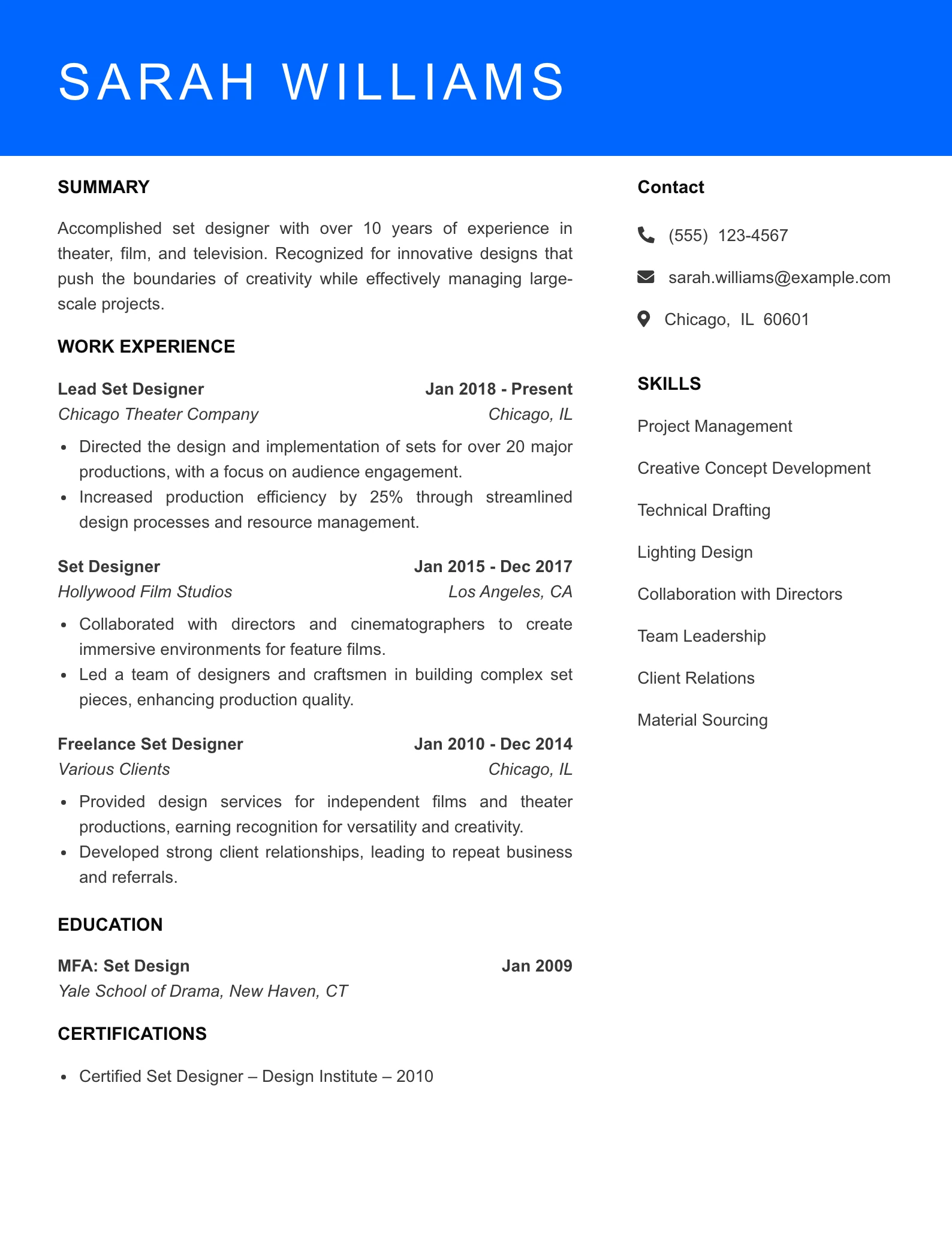



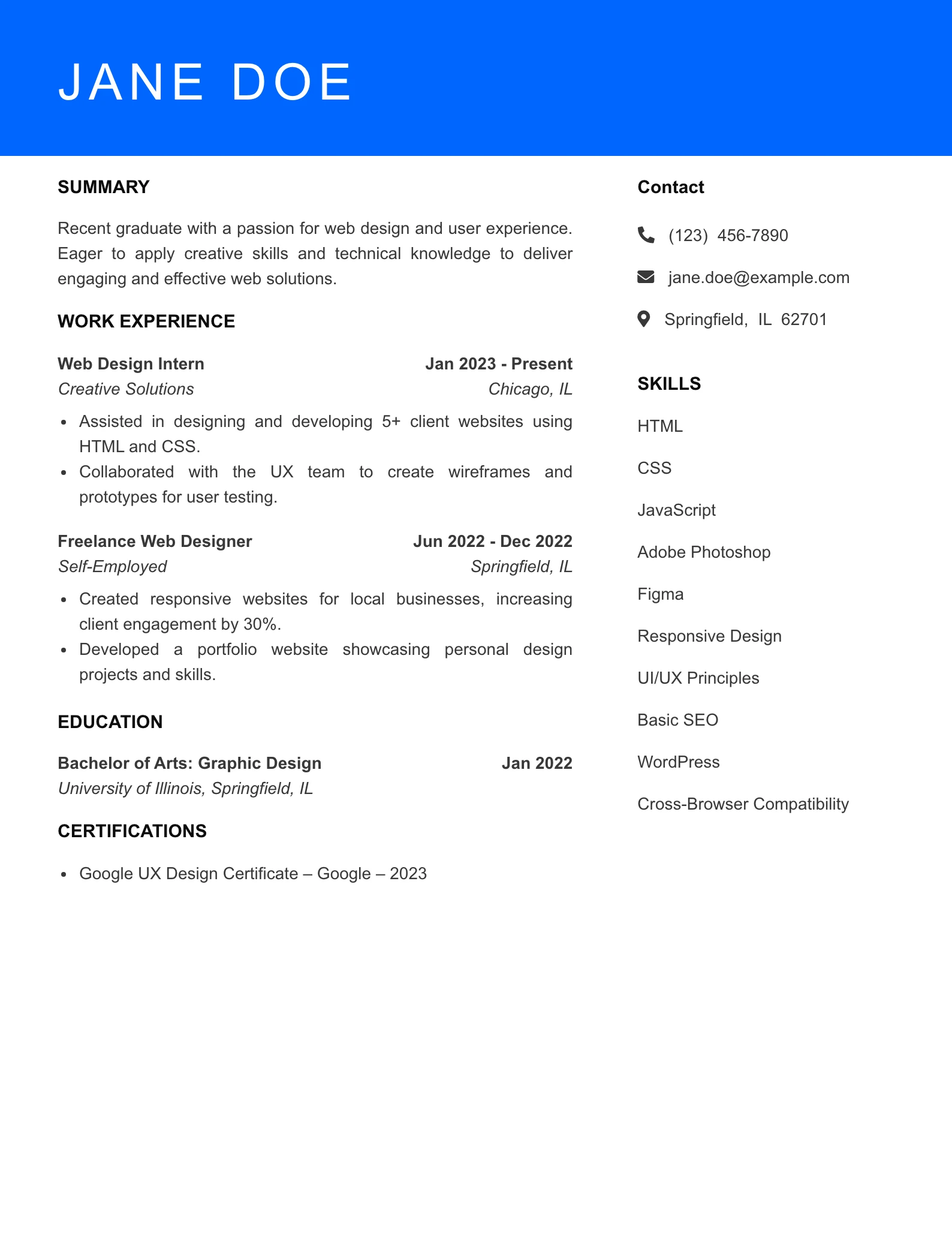
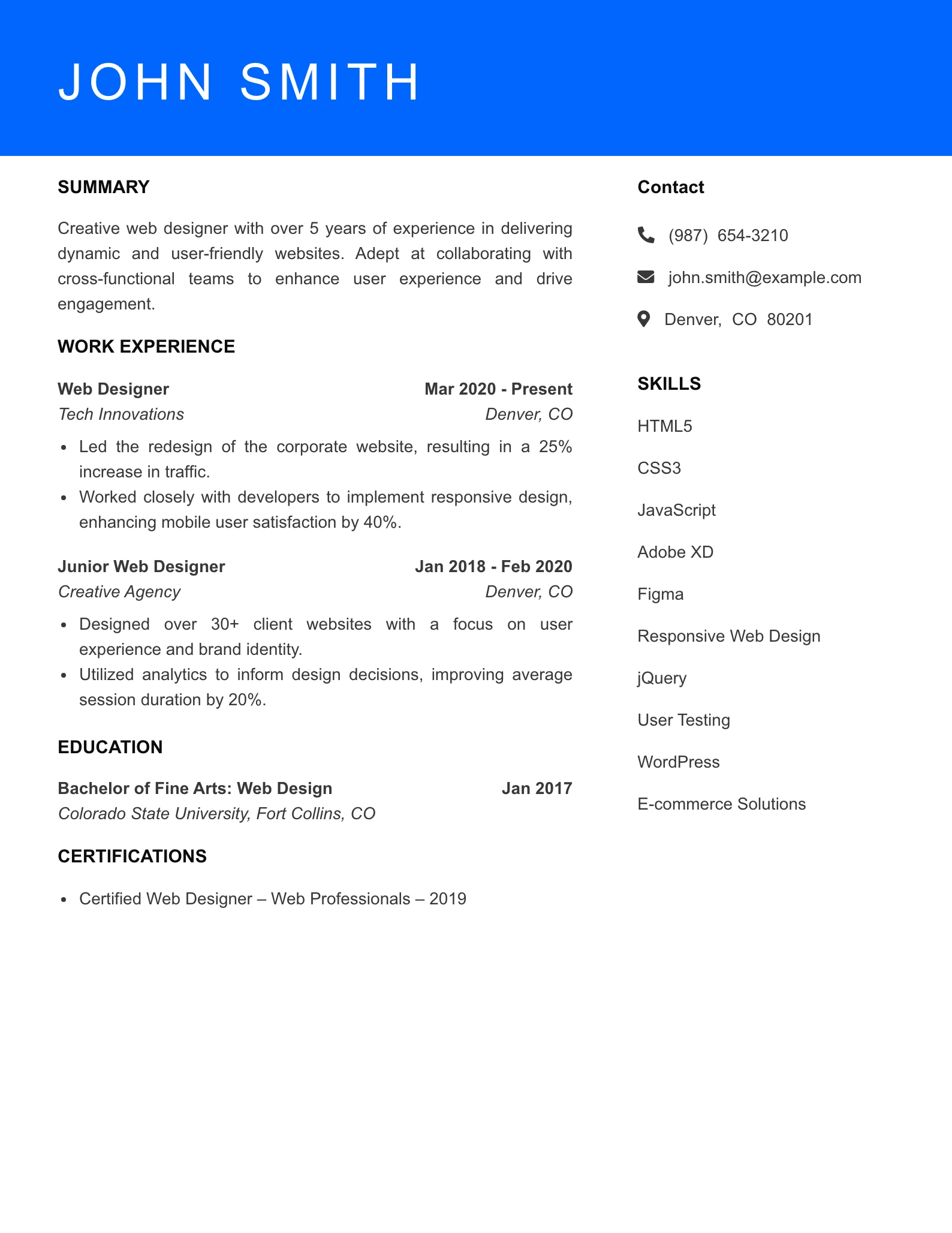








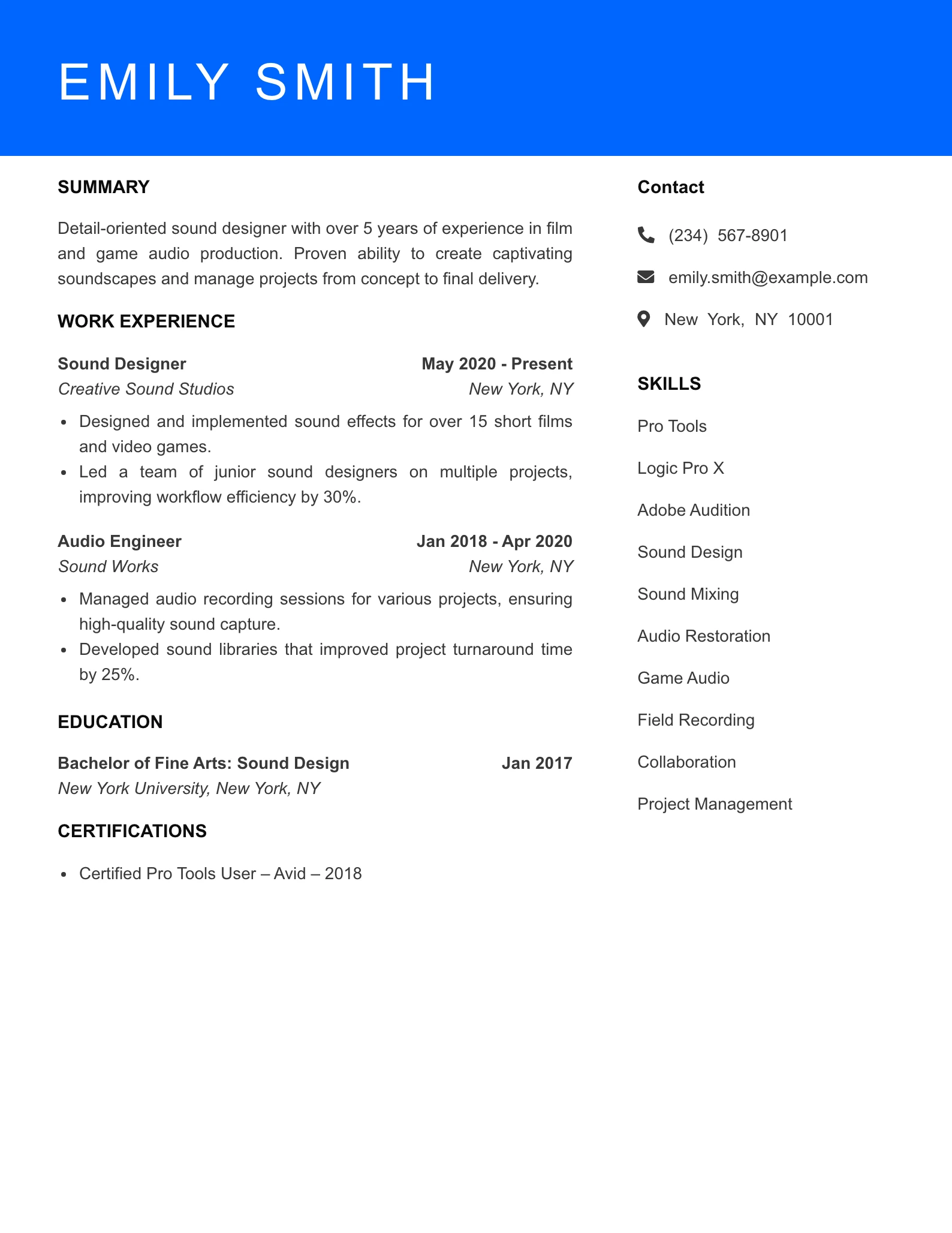
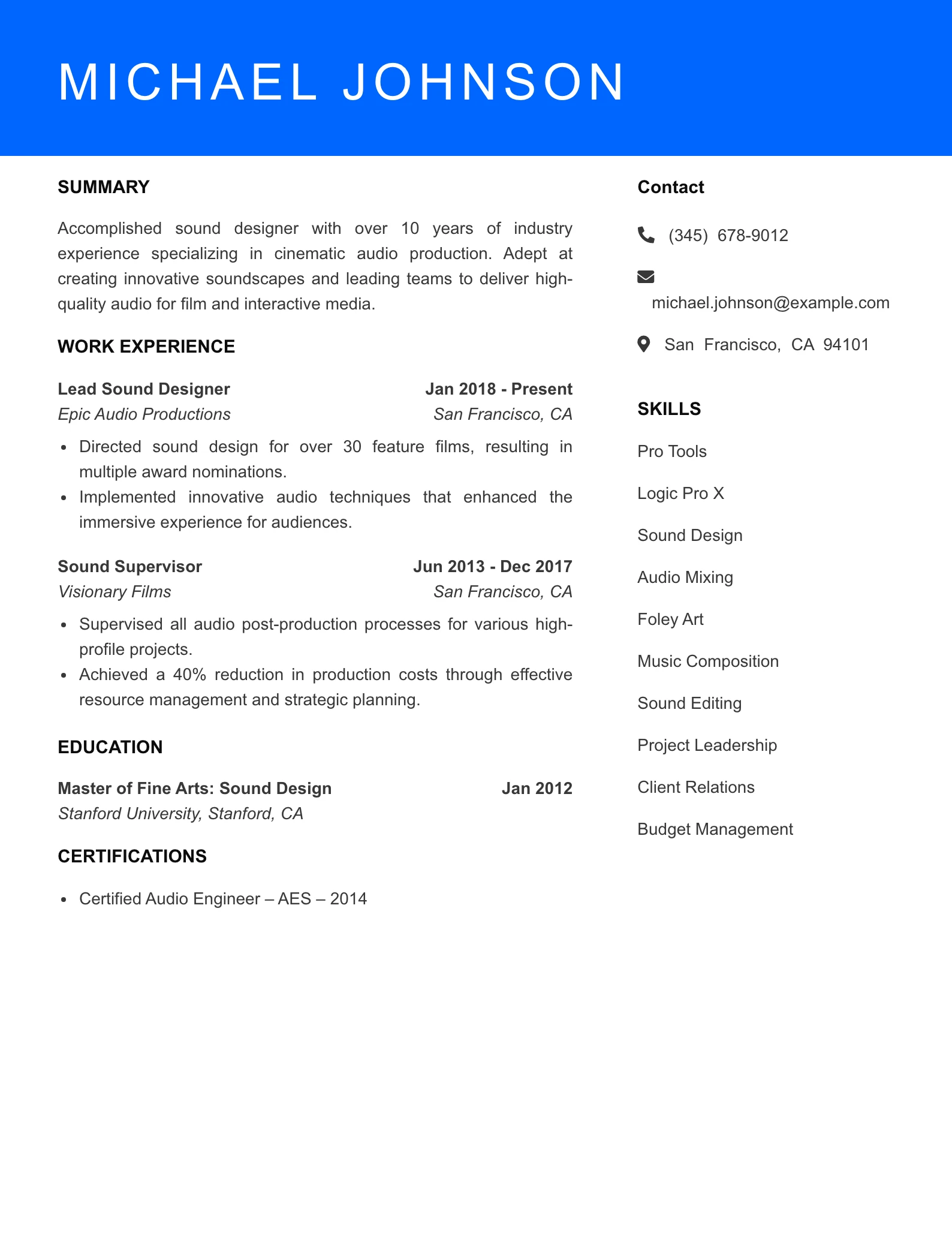
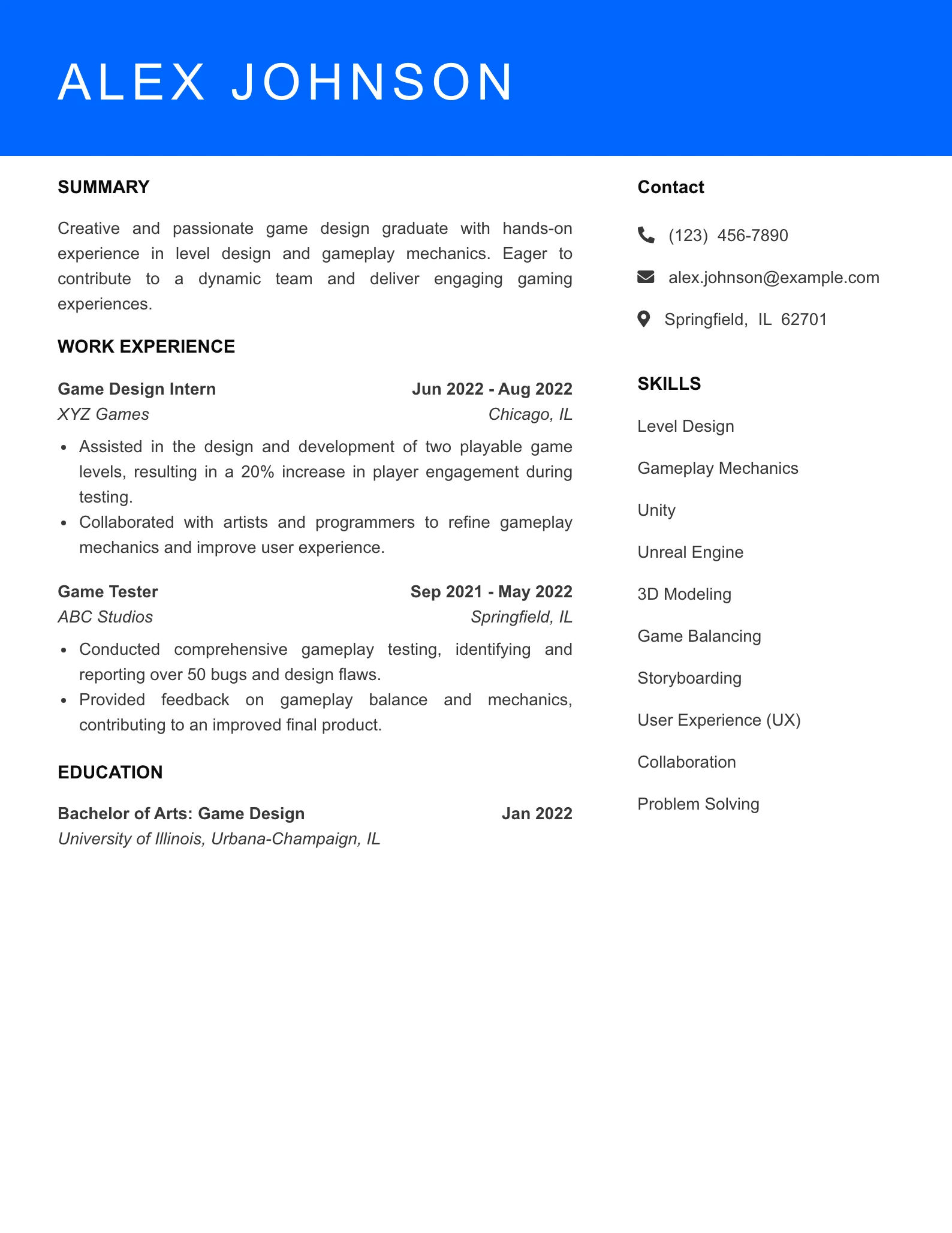
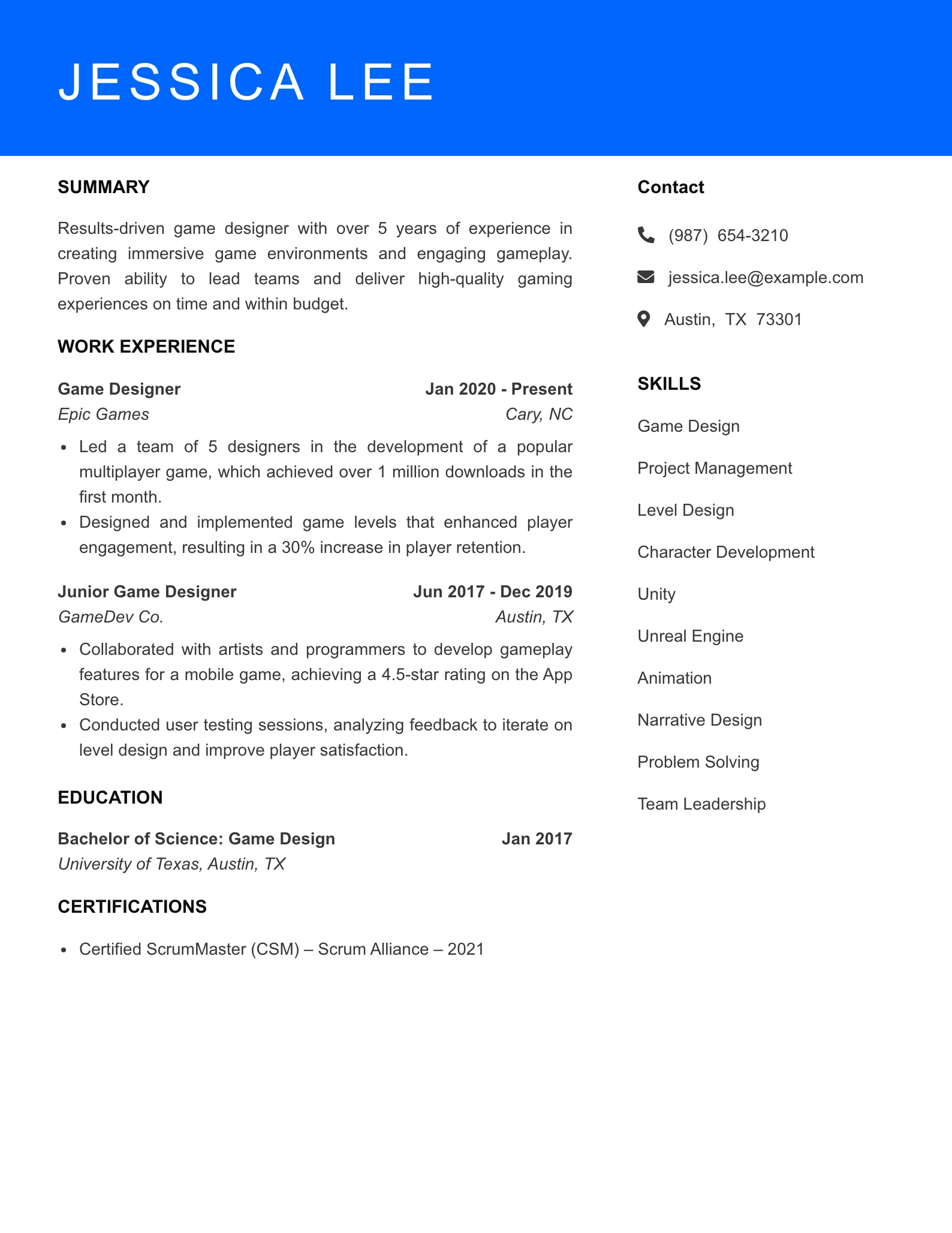
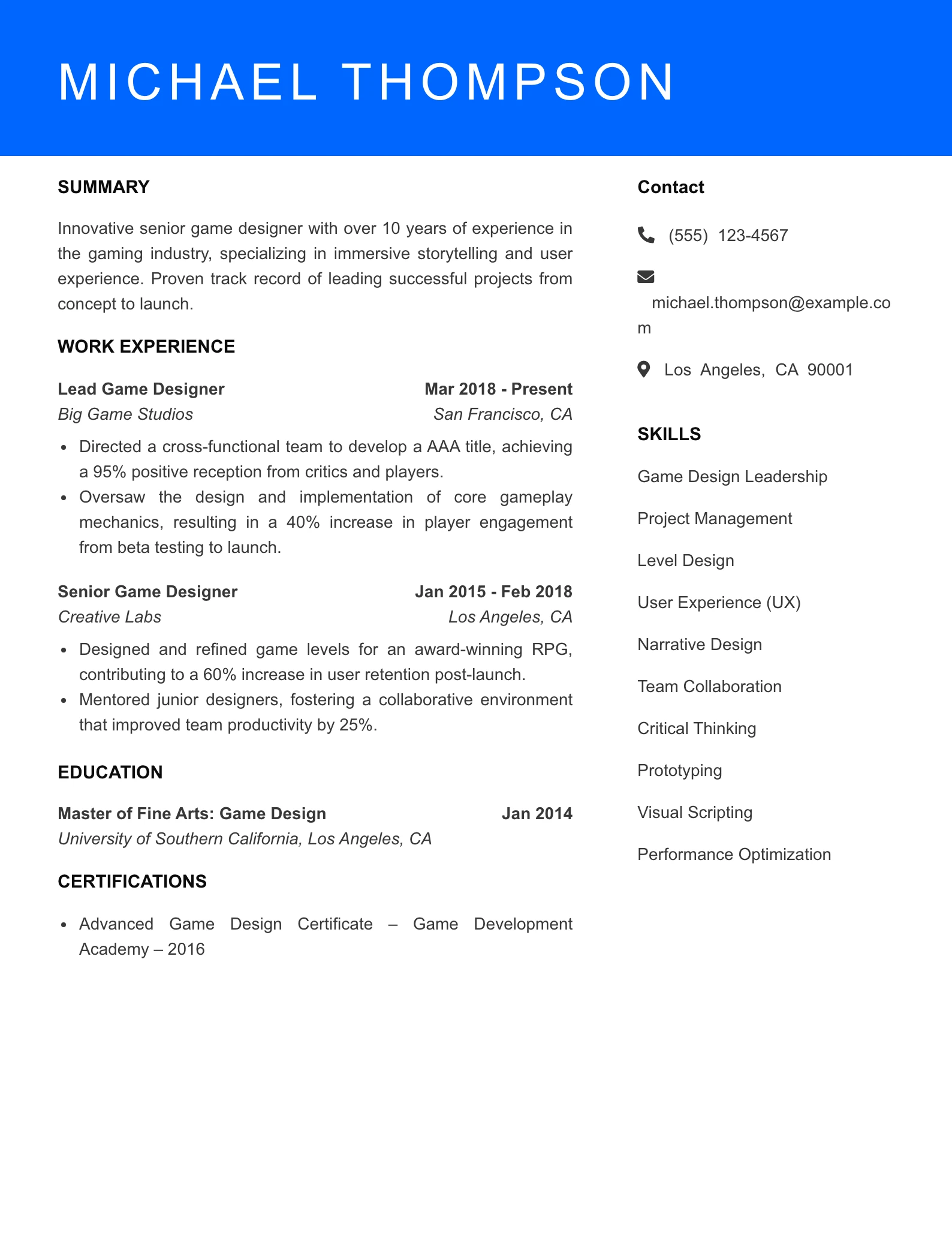
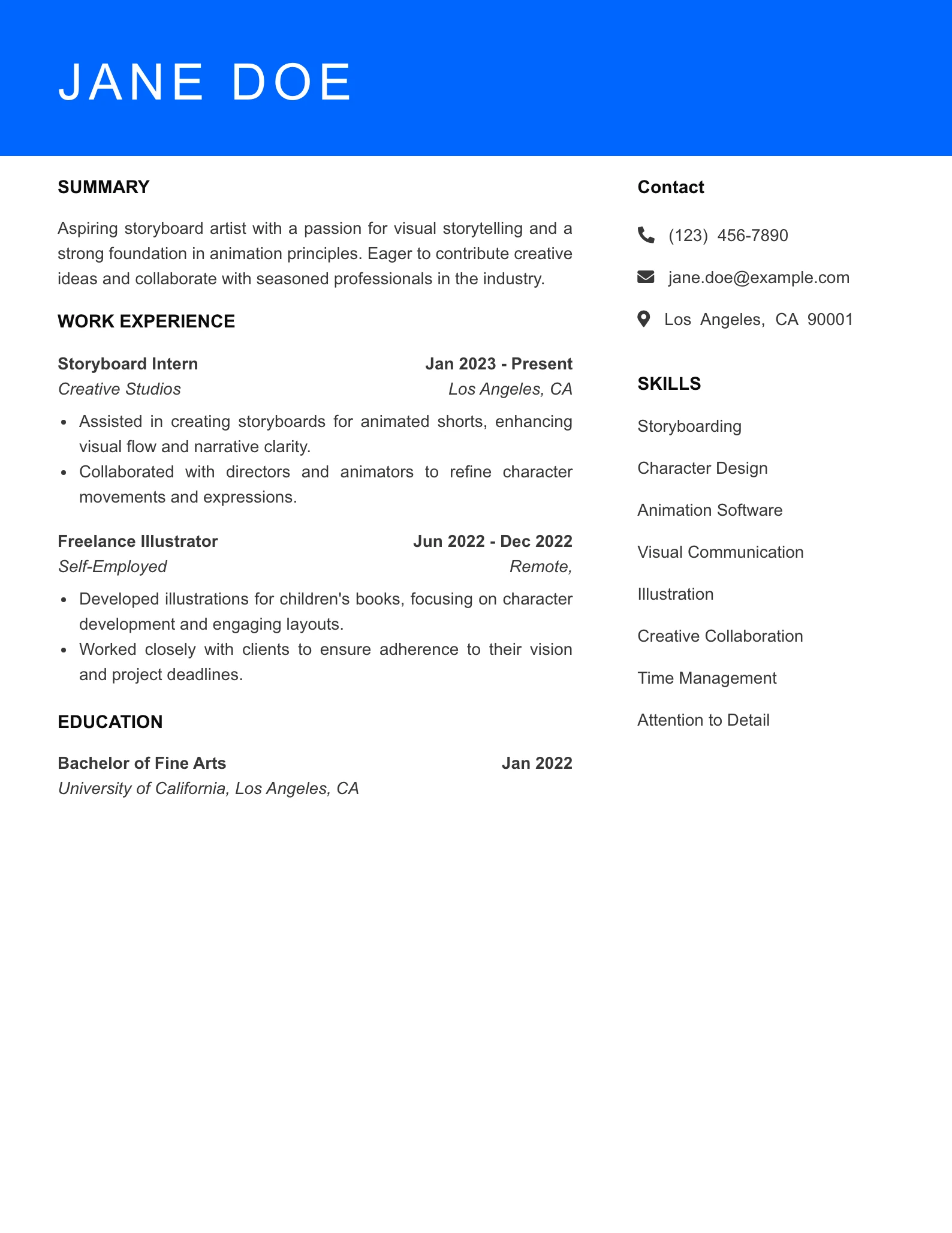
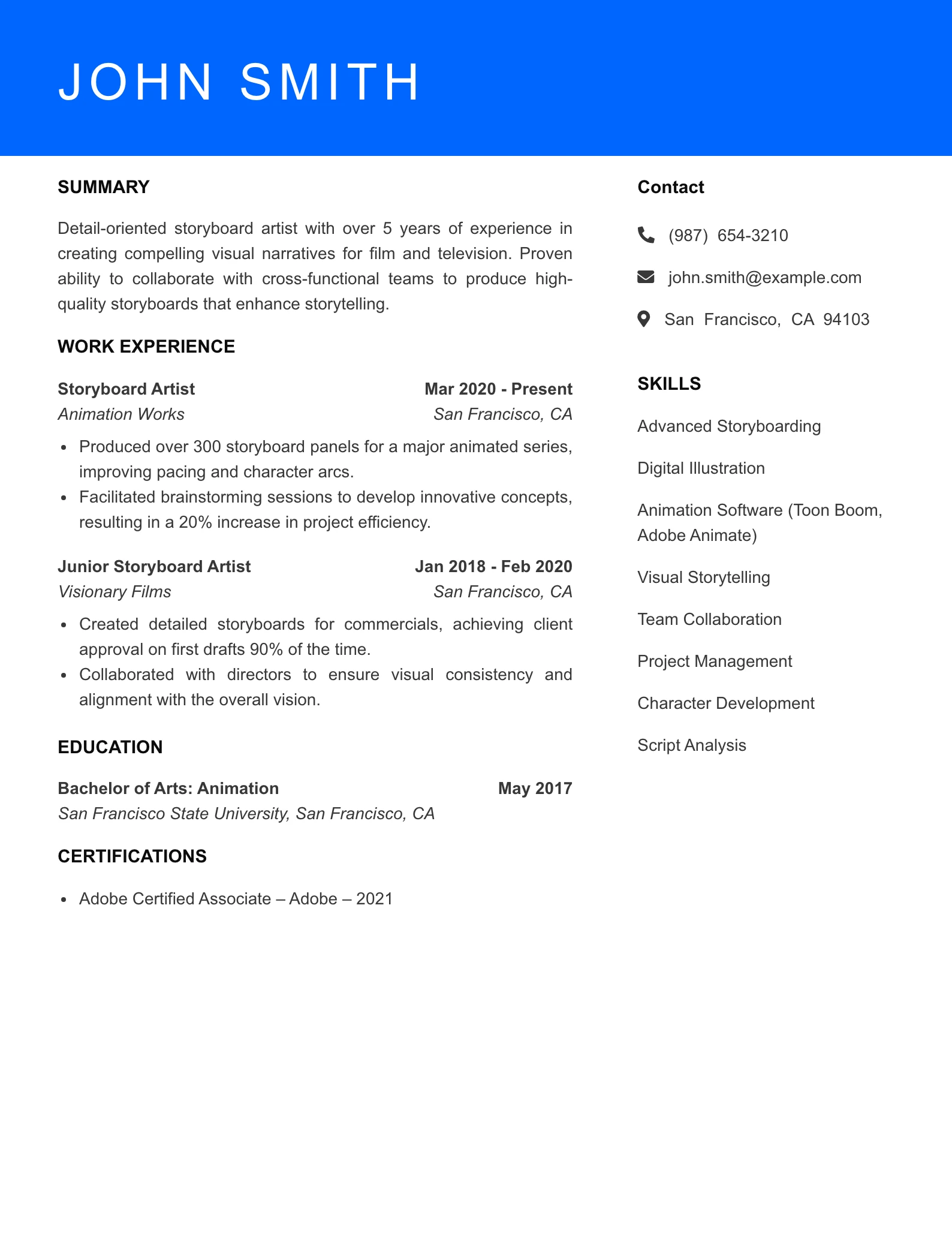


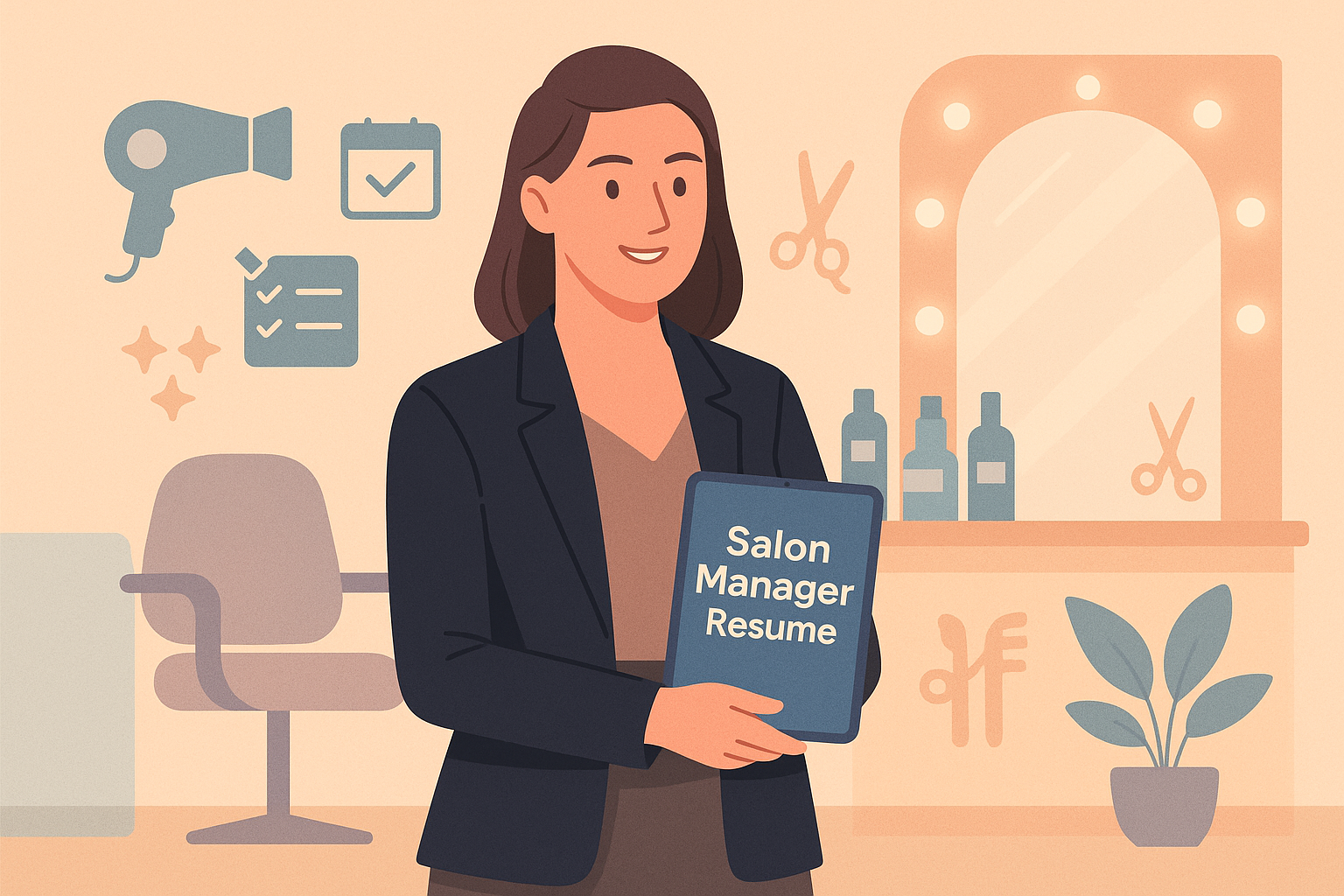

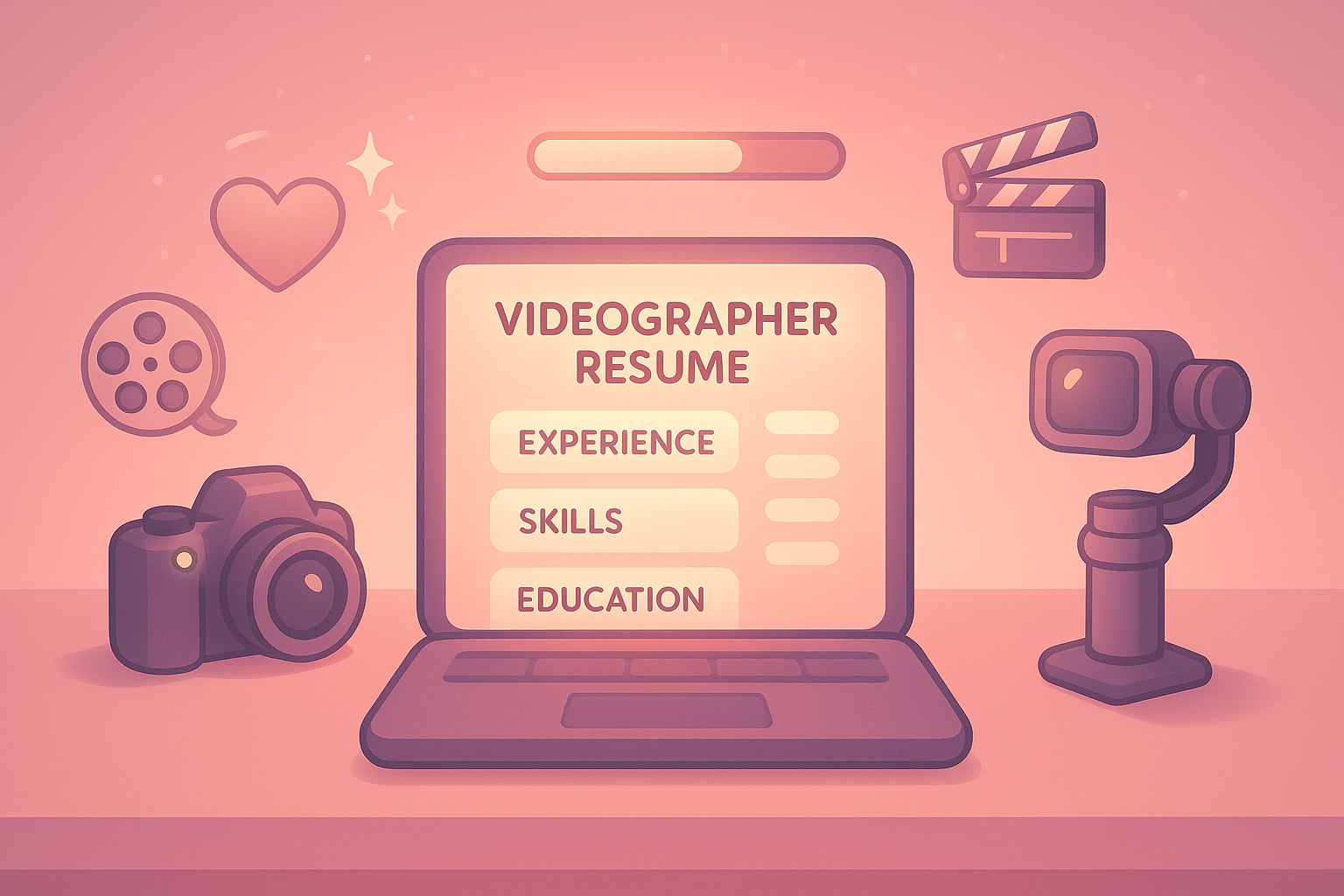
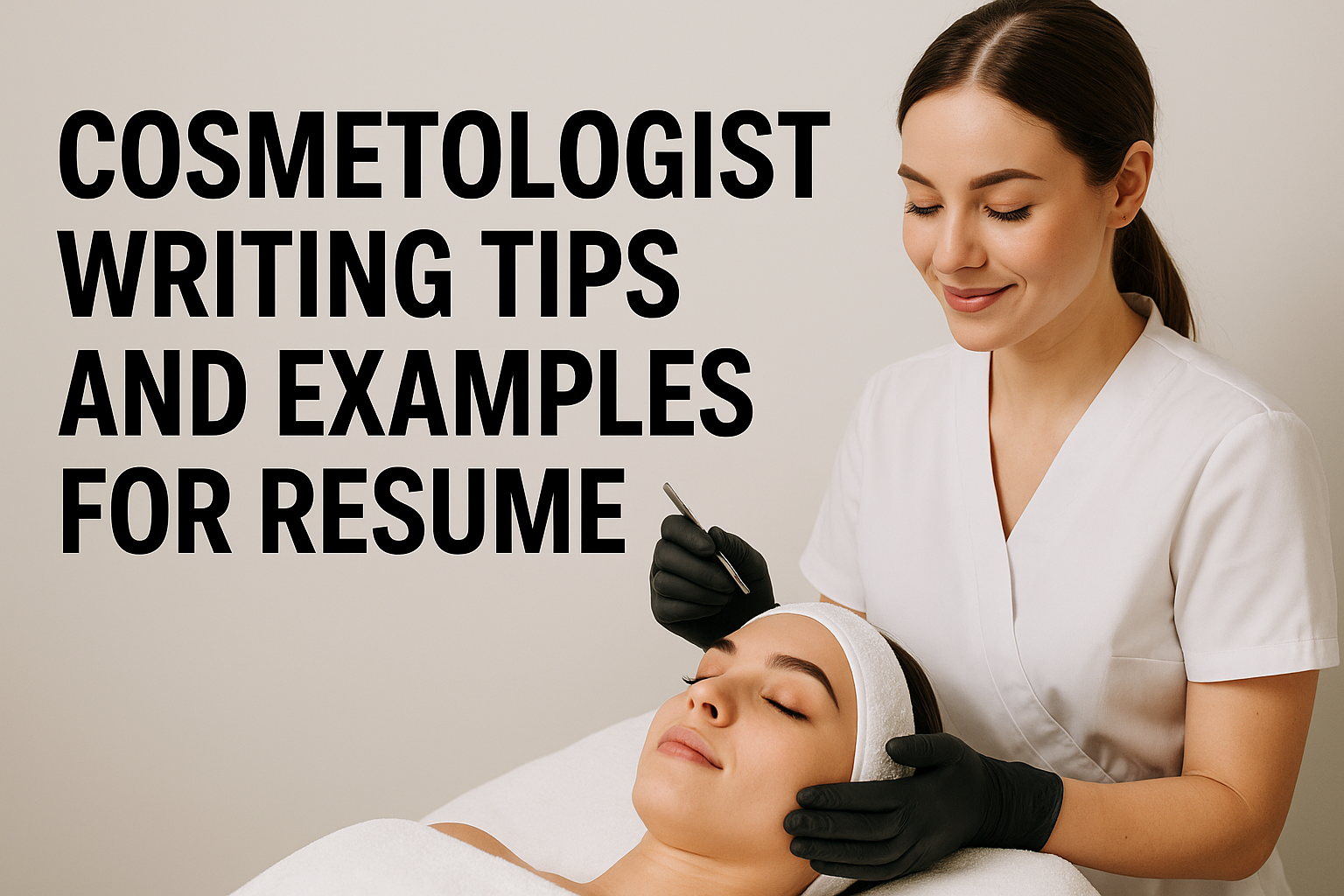
![Mechanical Engineer Resume Example & Writing Guide [2025]](https://myresumestar.com/wp-content/uploads/2025/11/featured-image-for-article-on-mechanical-engineer.webp)
